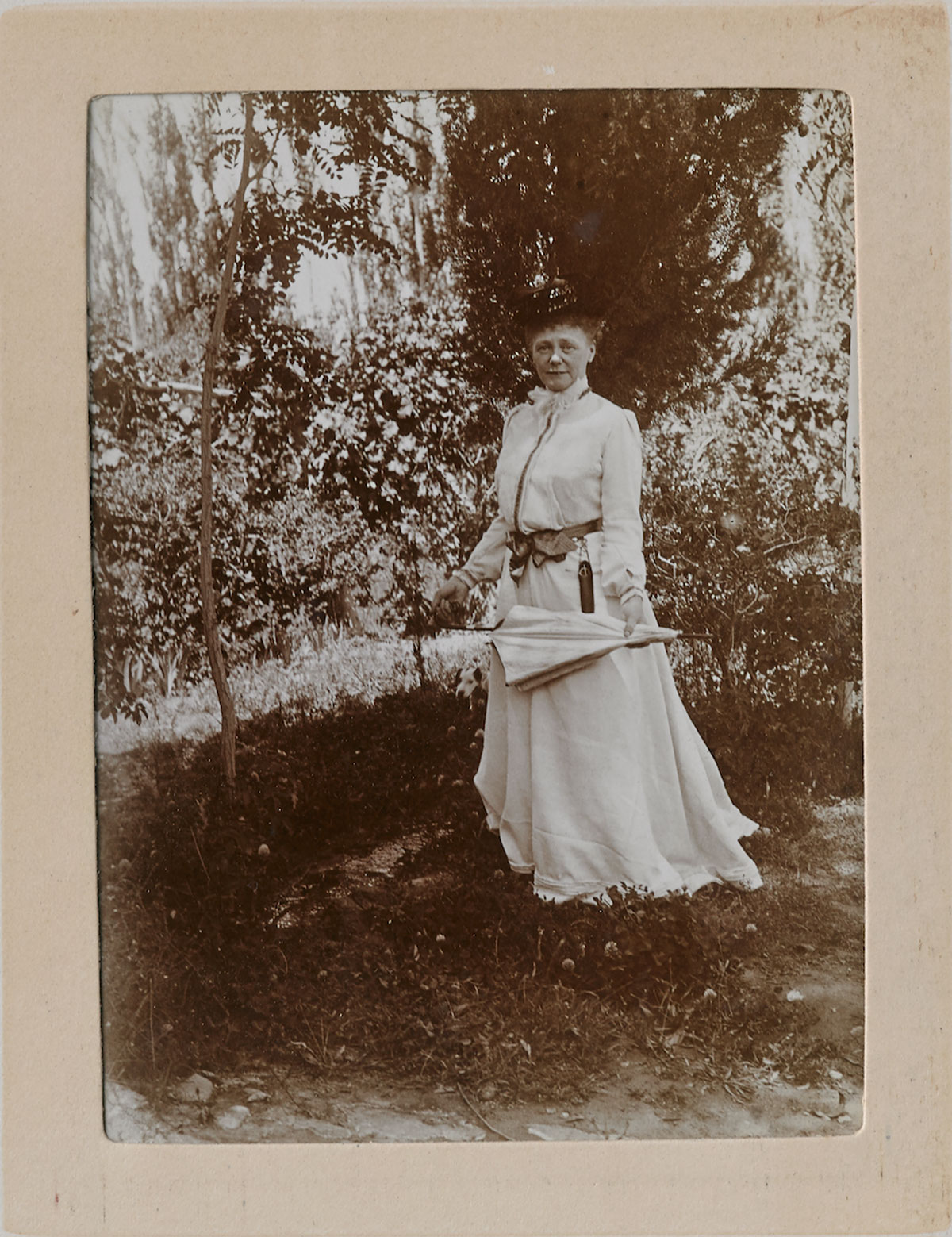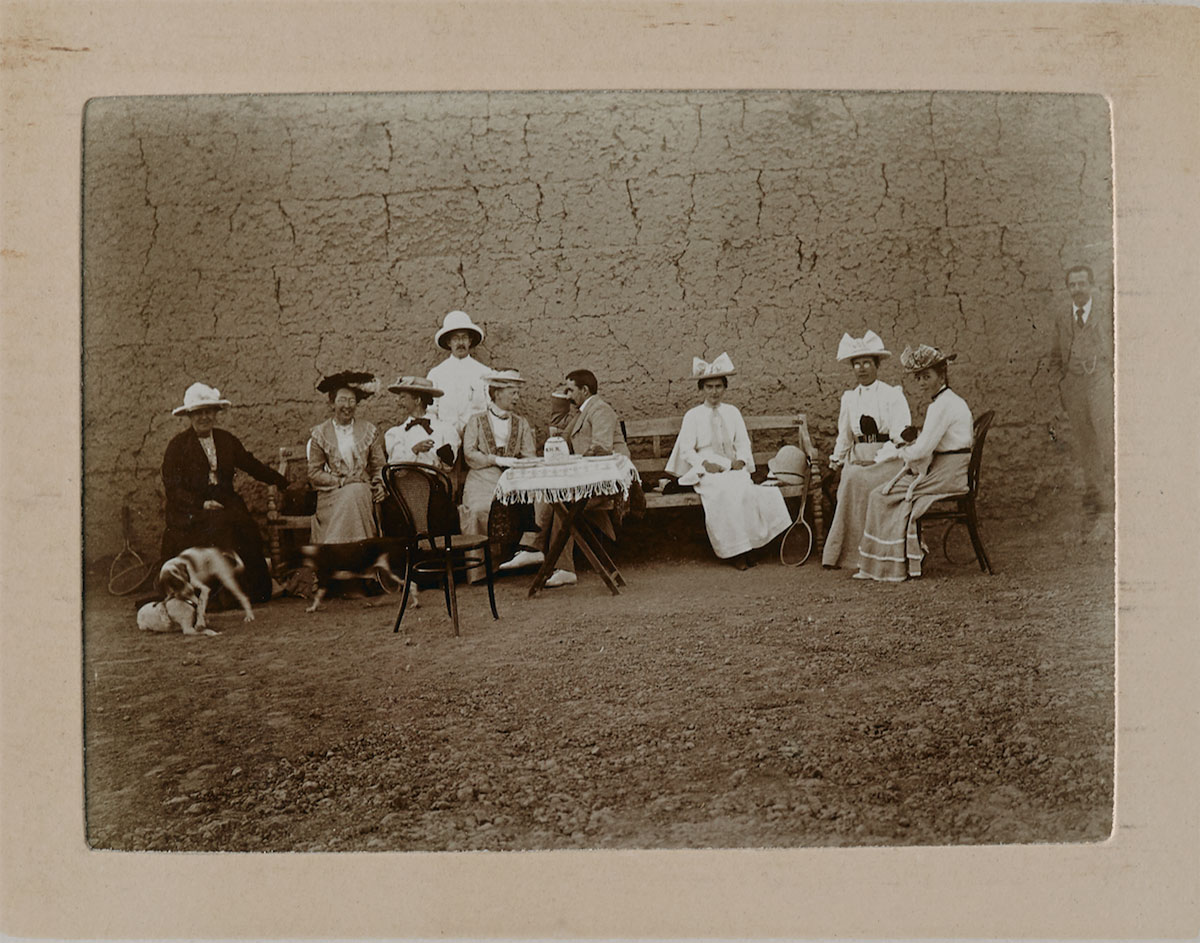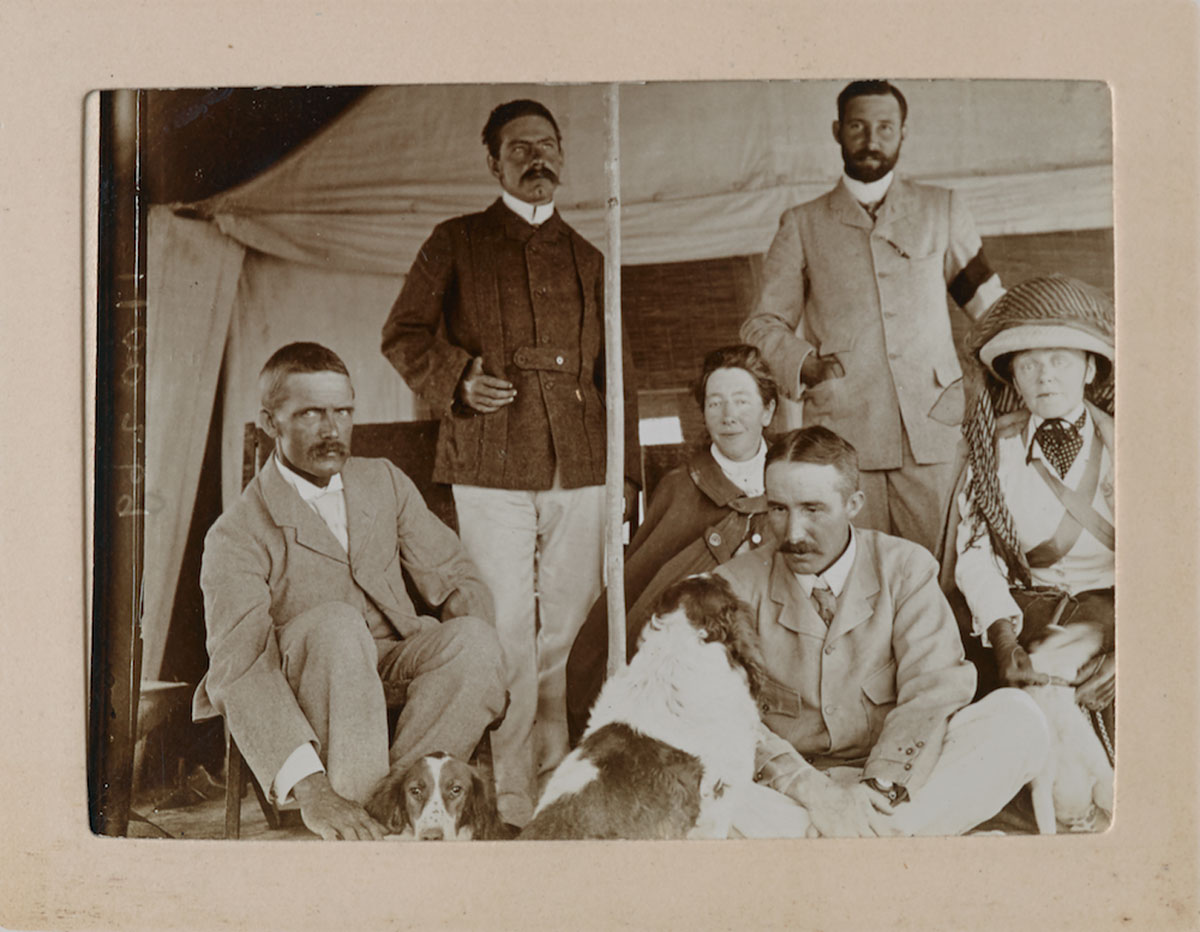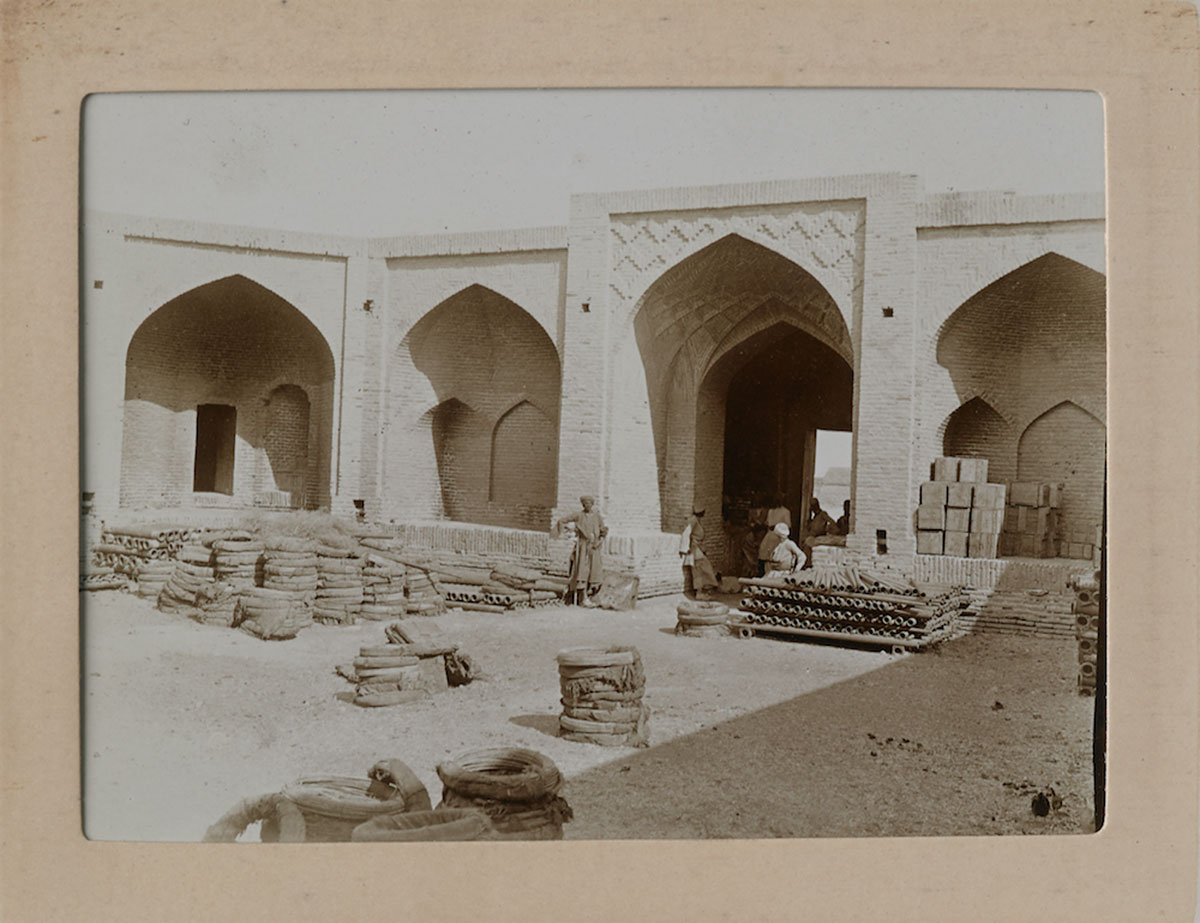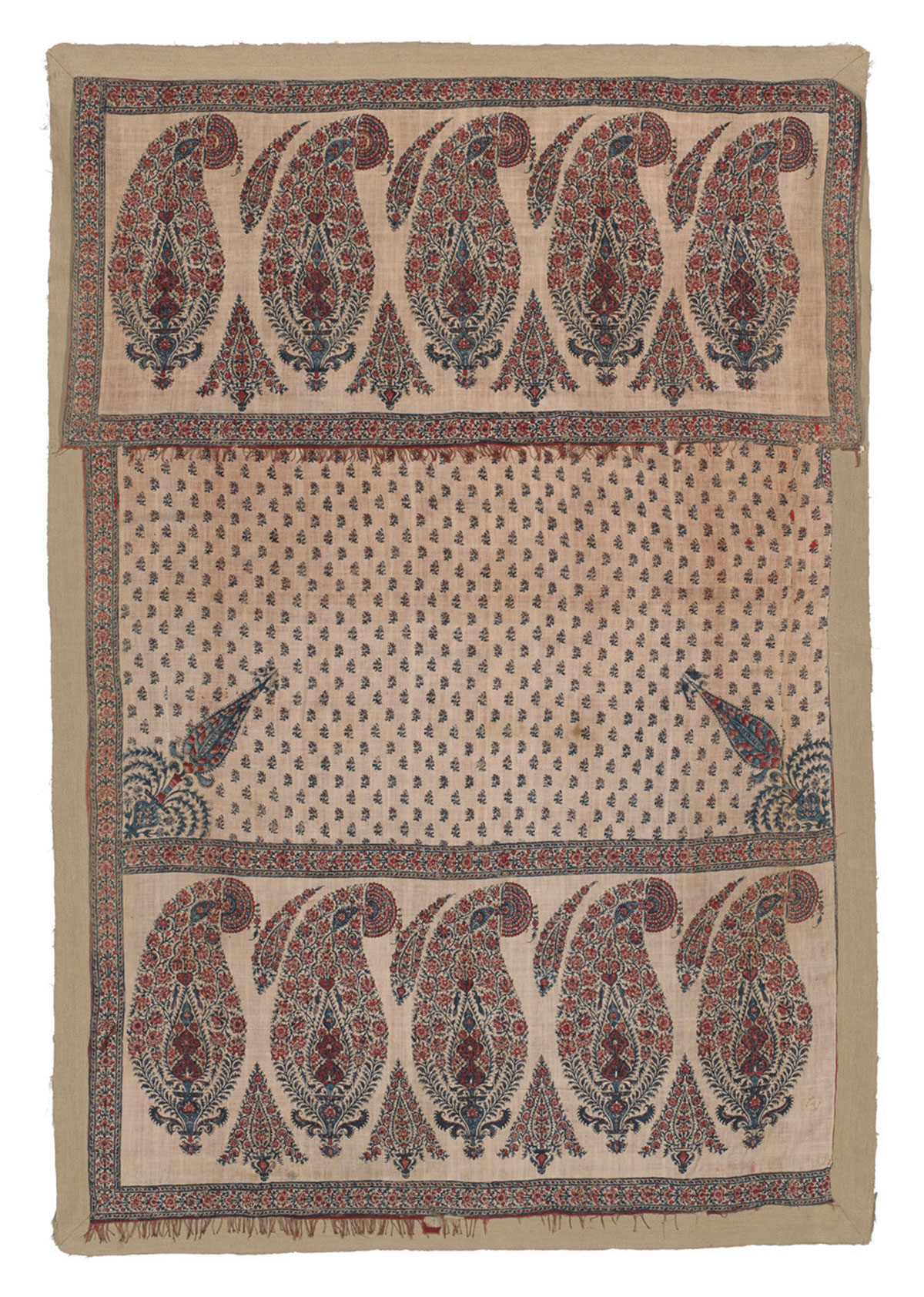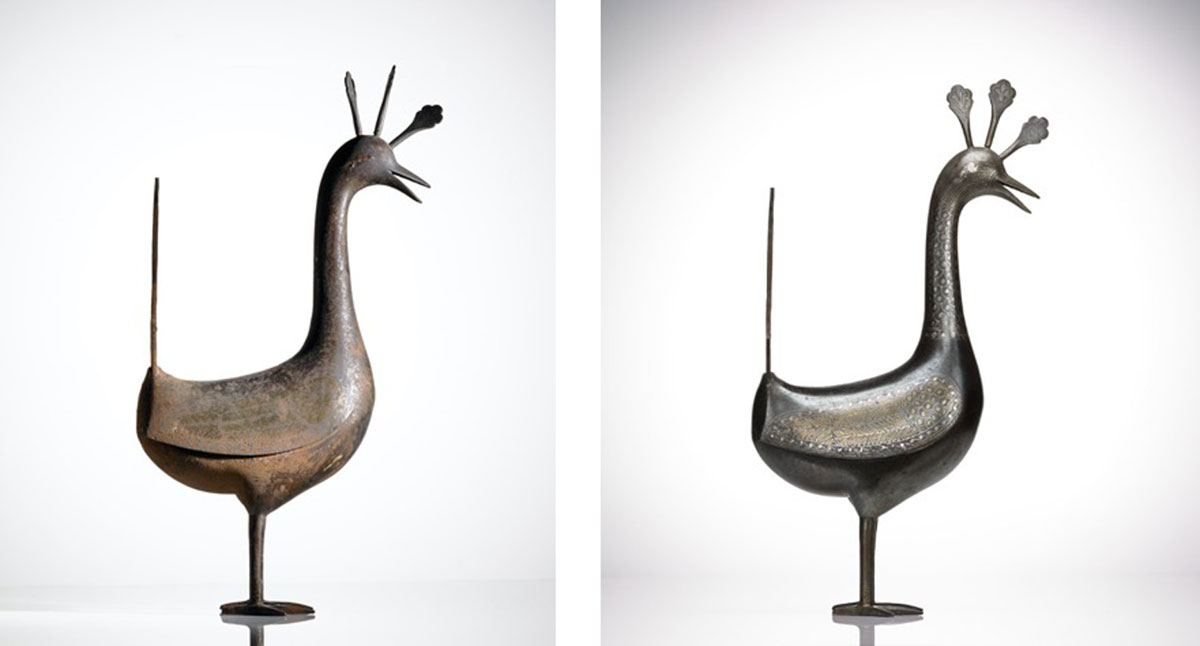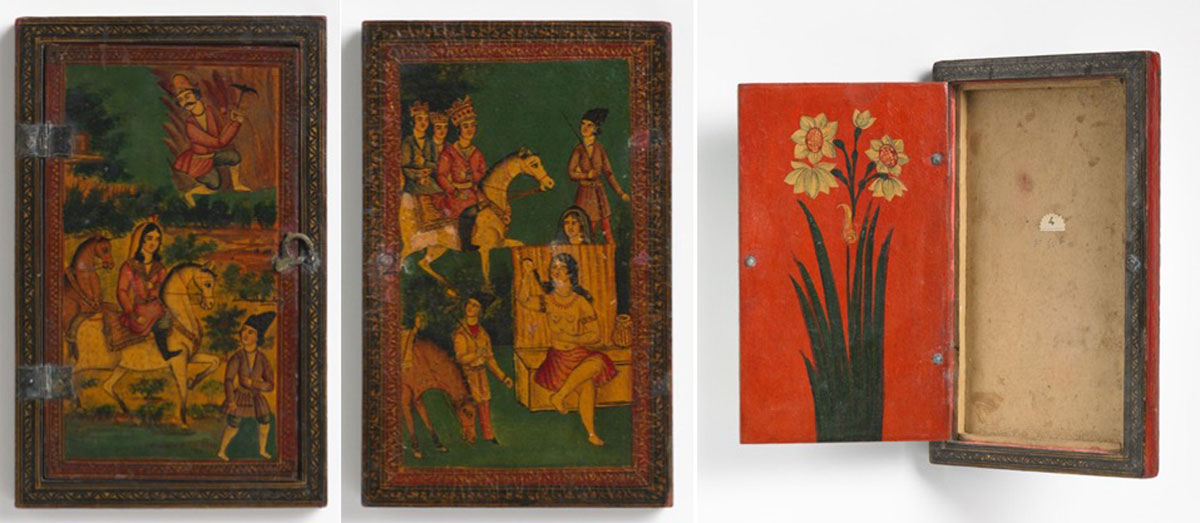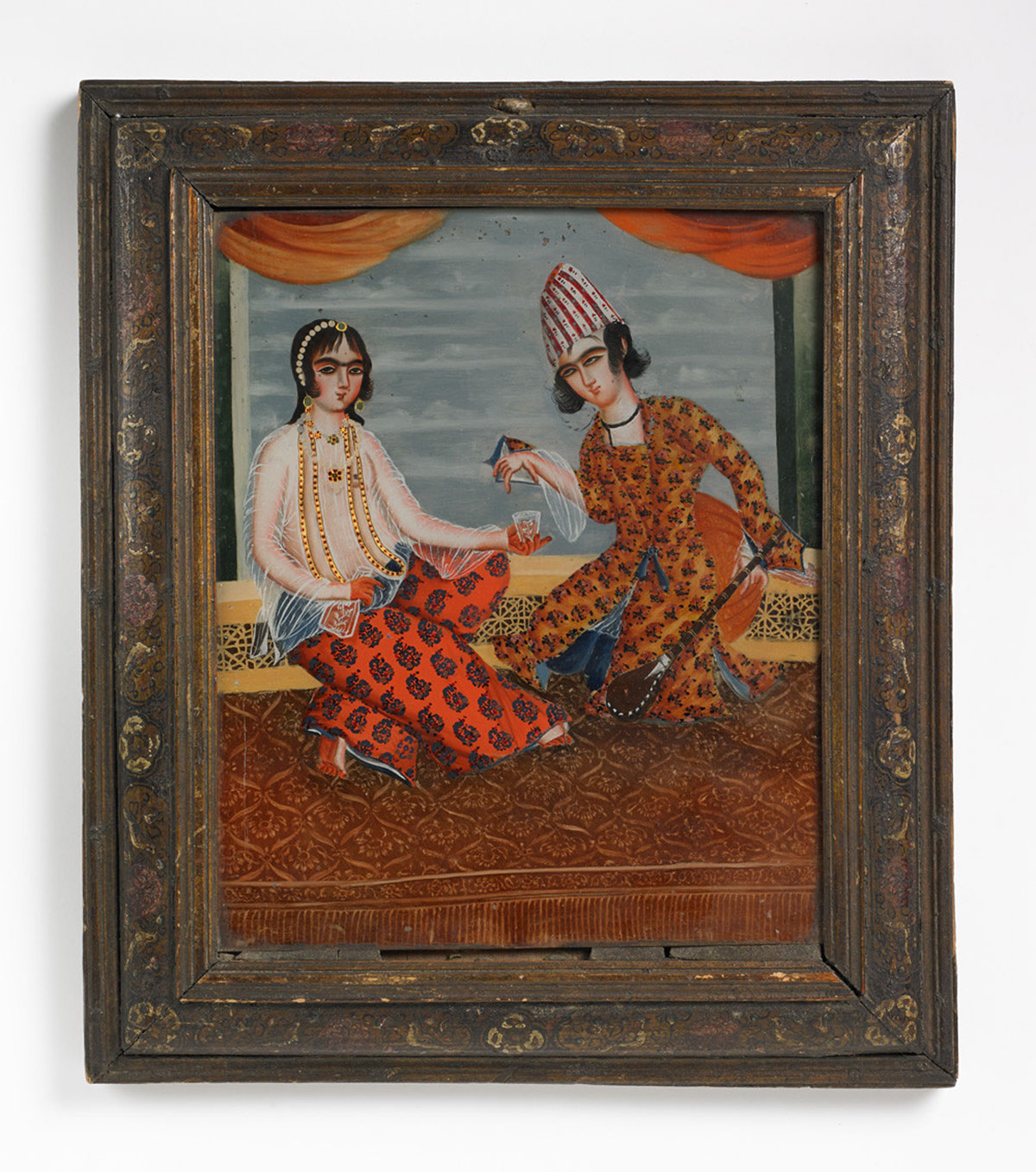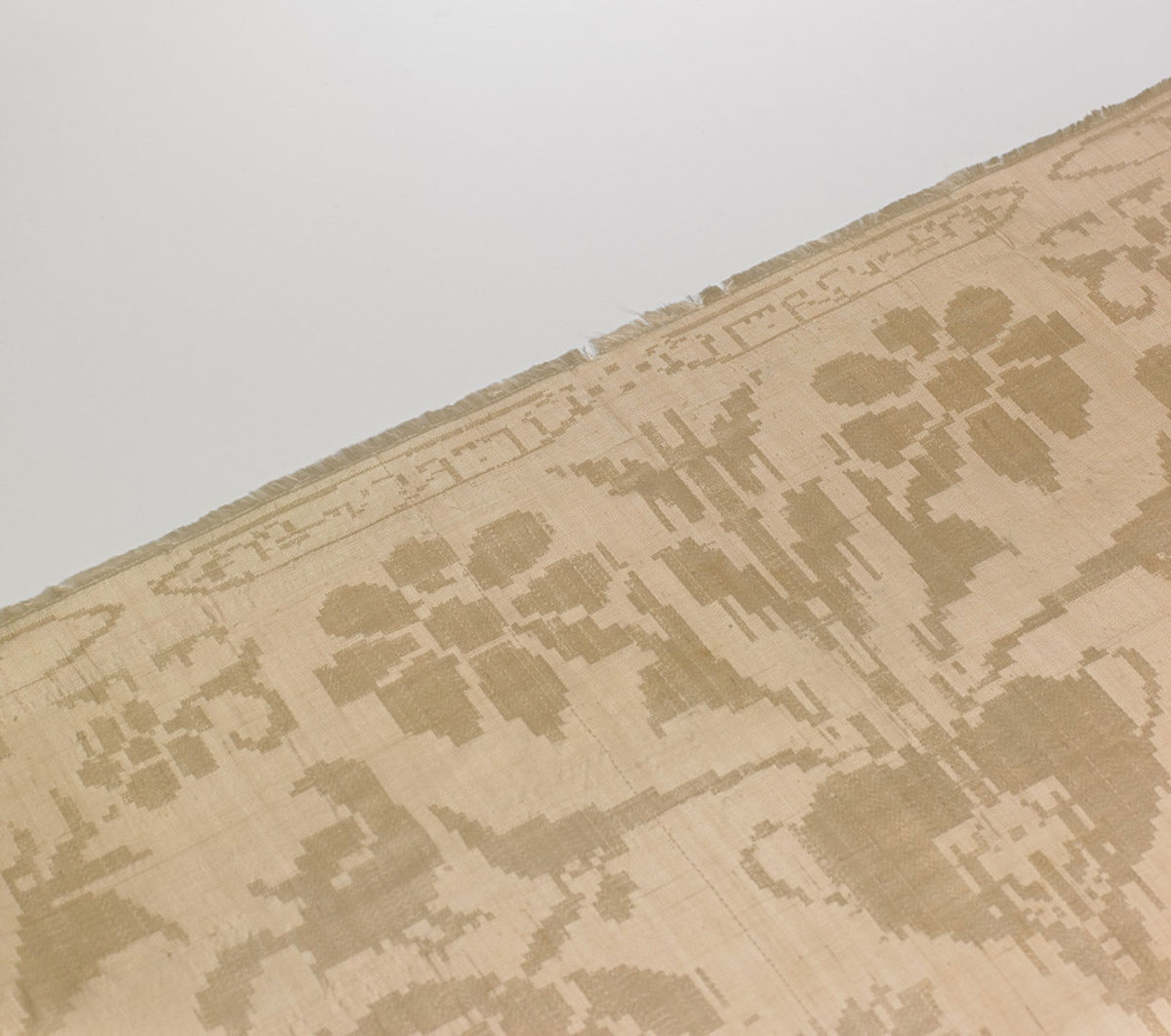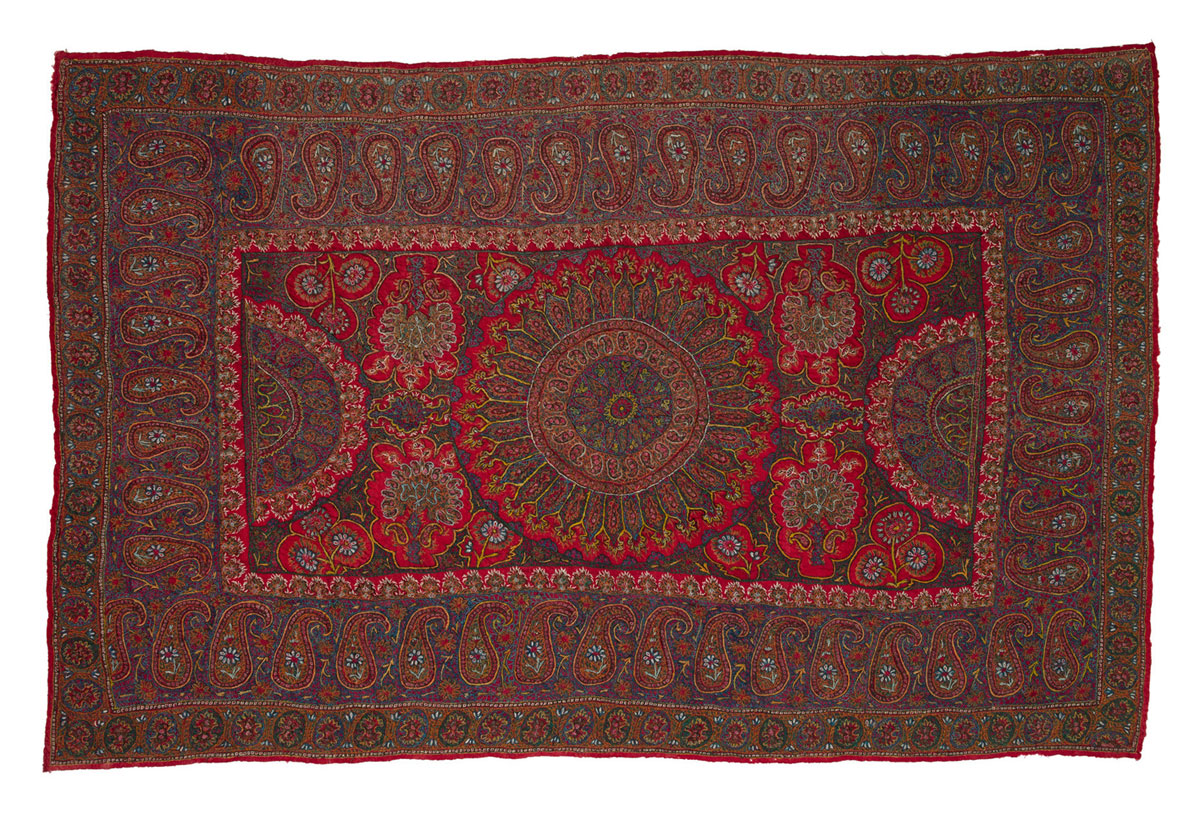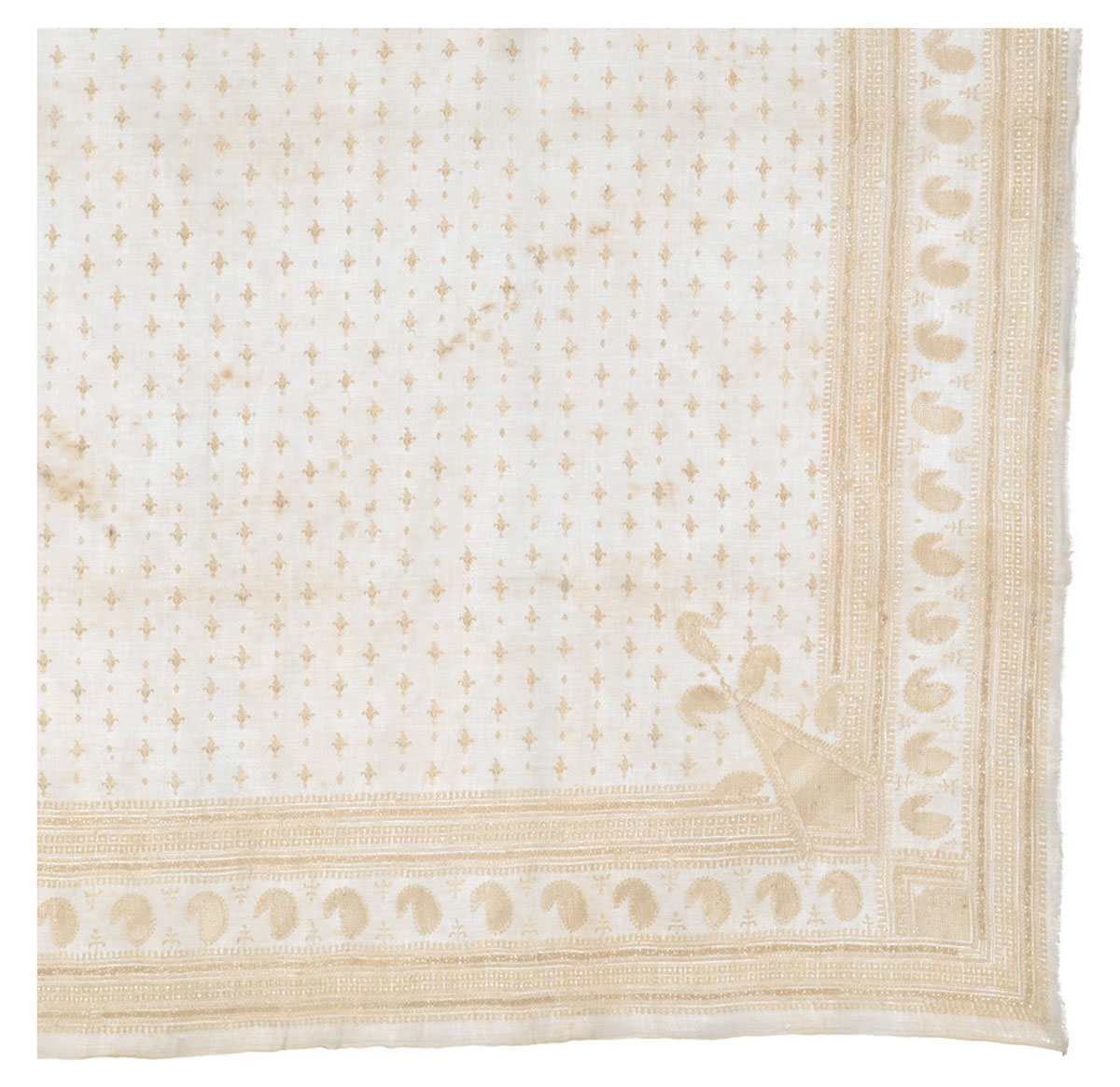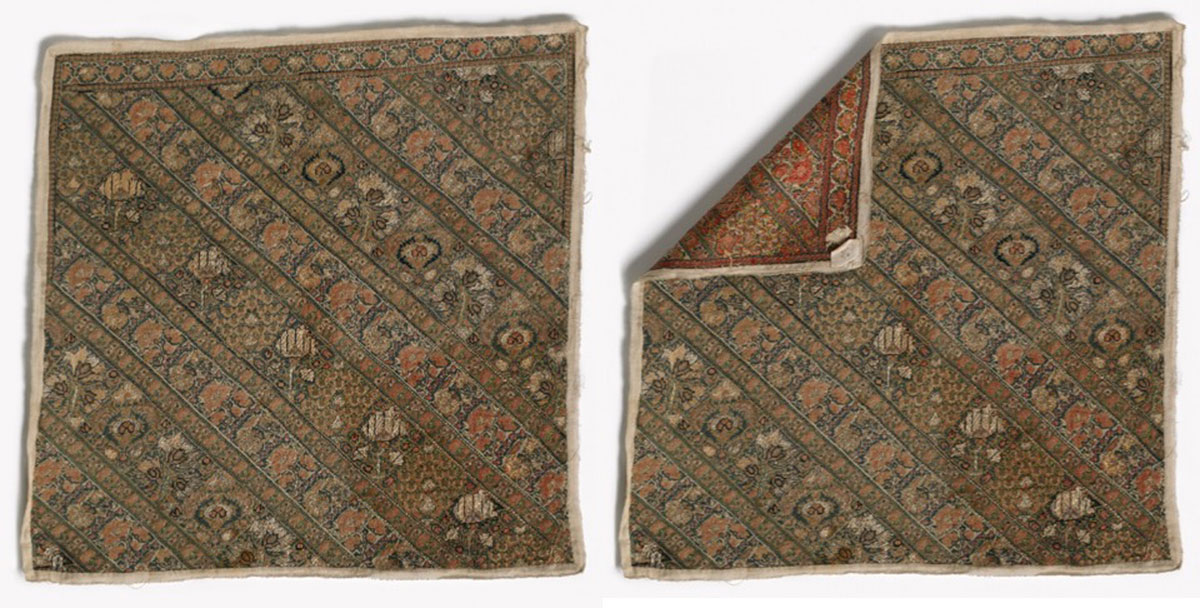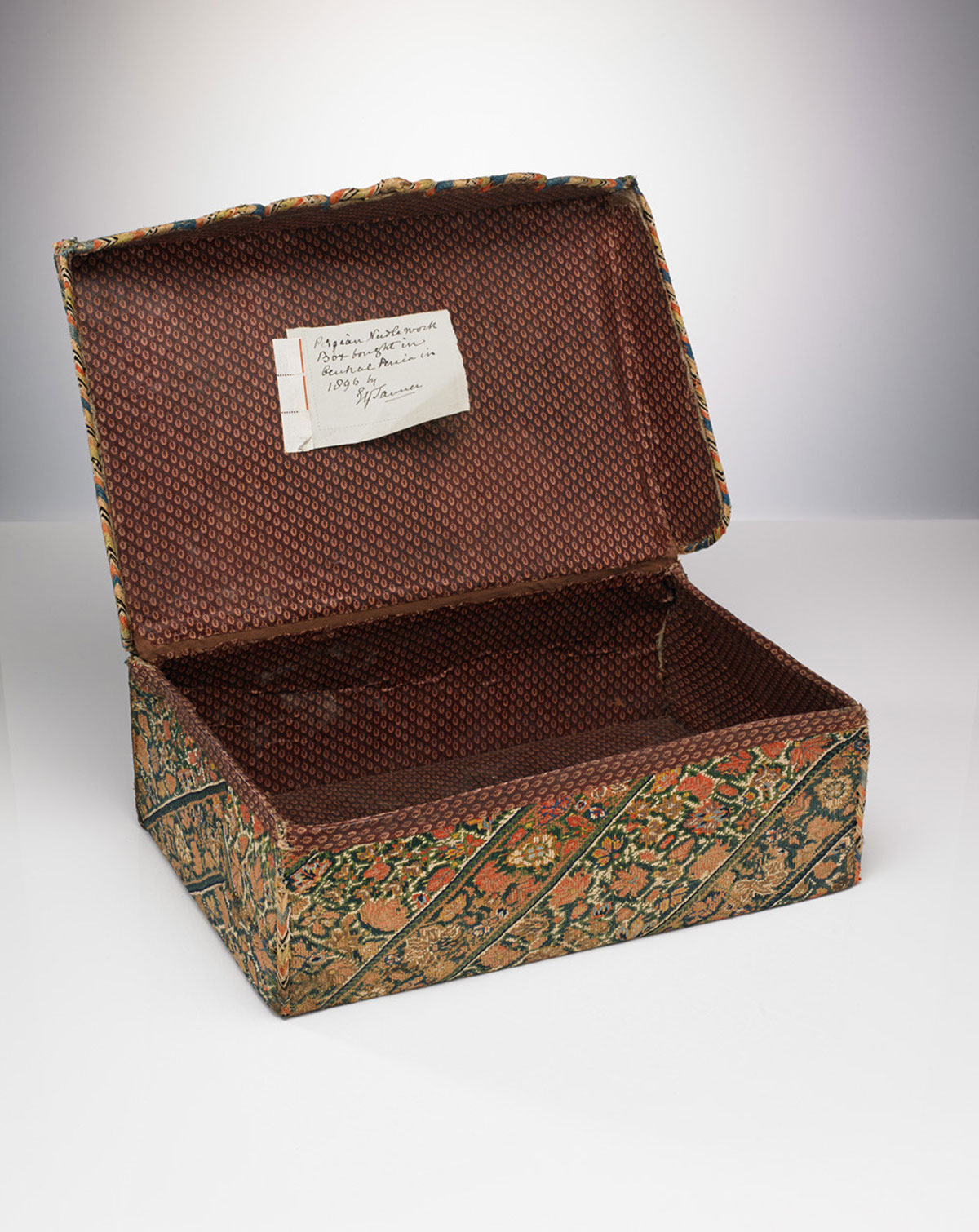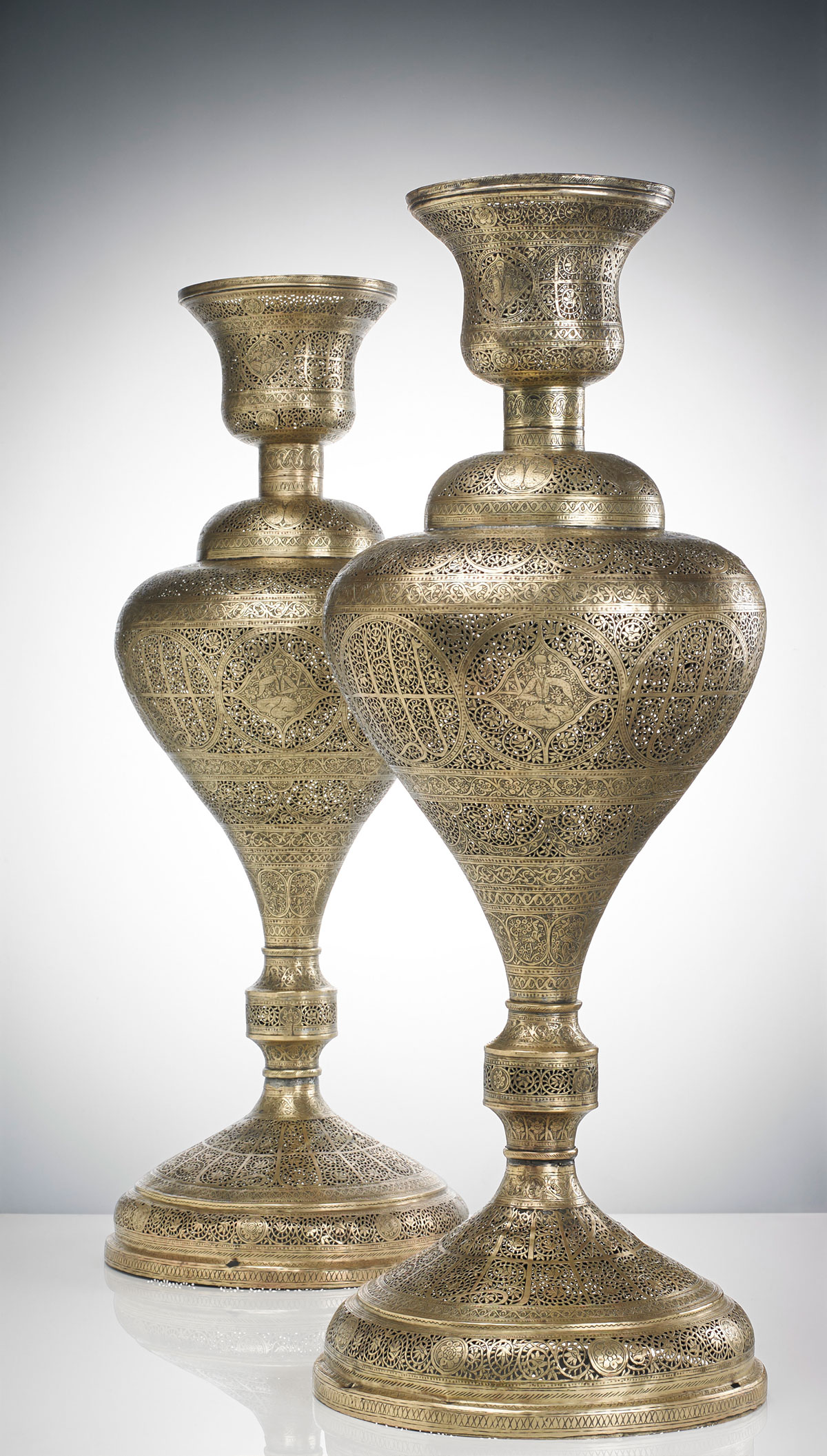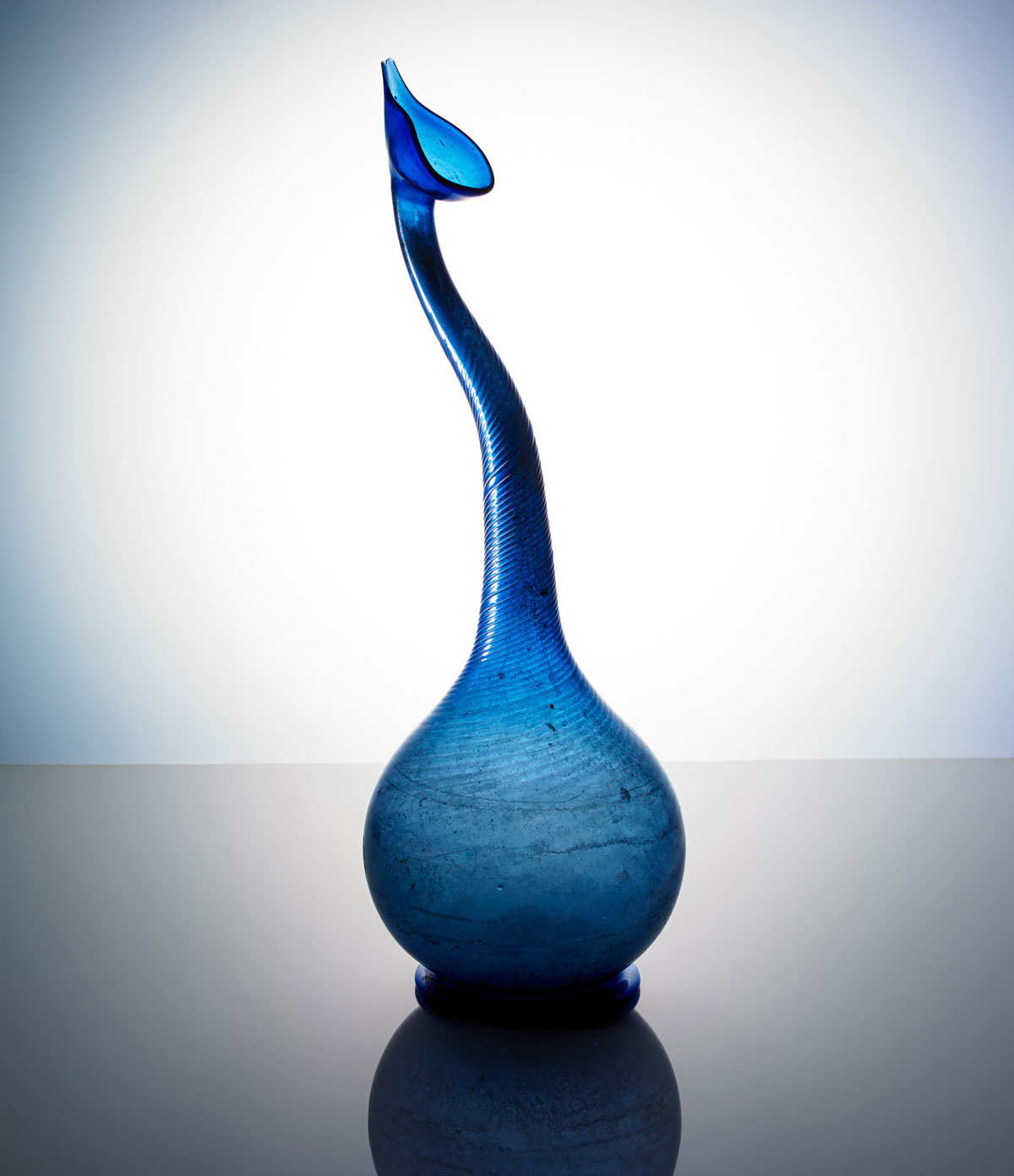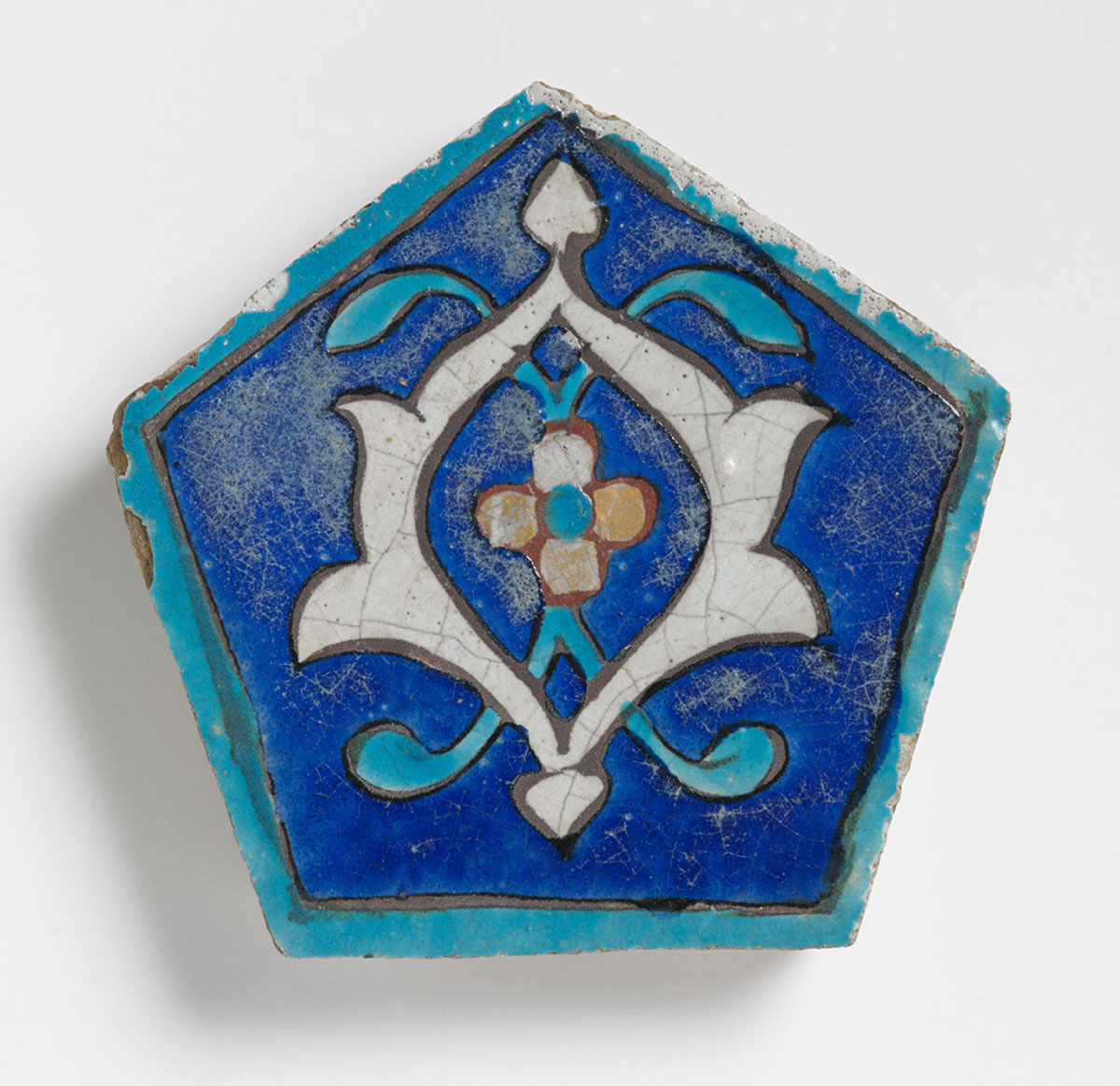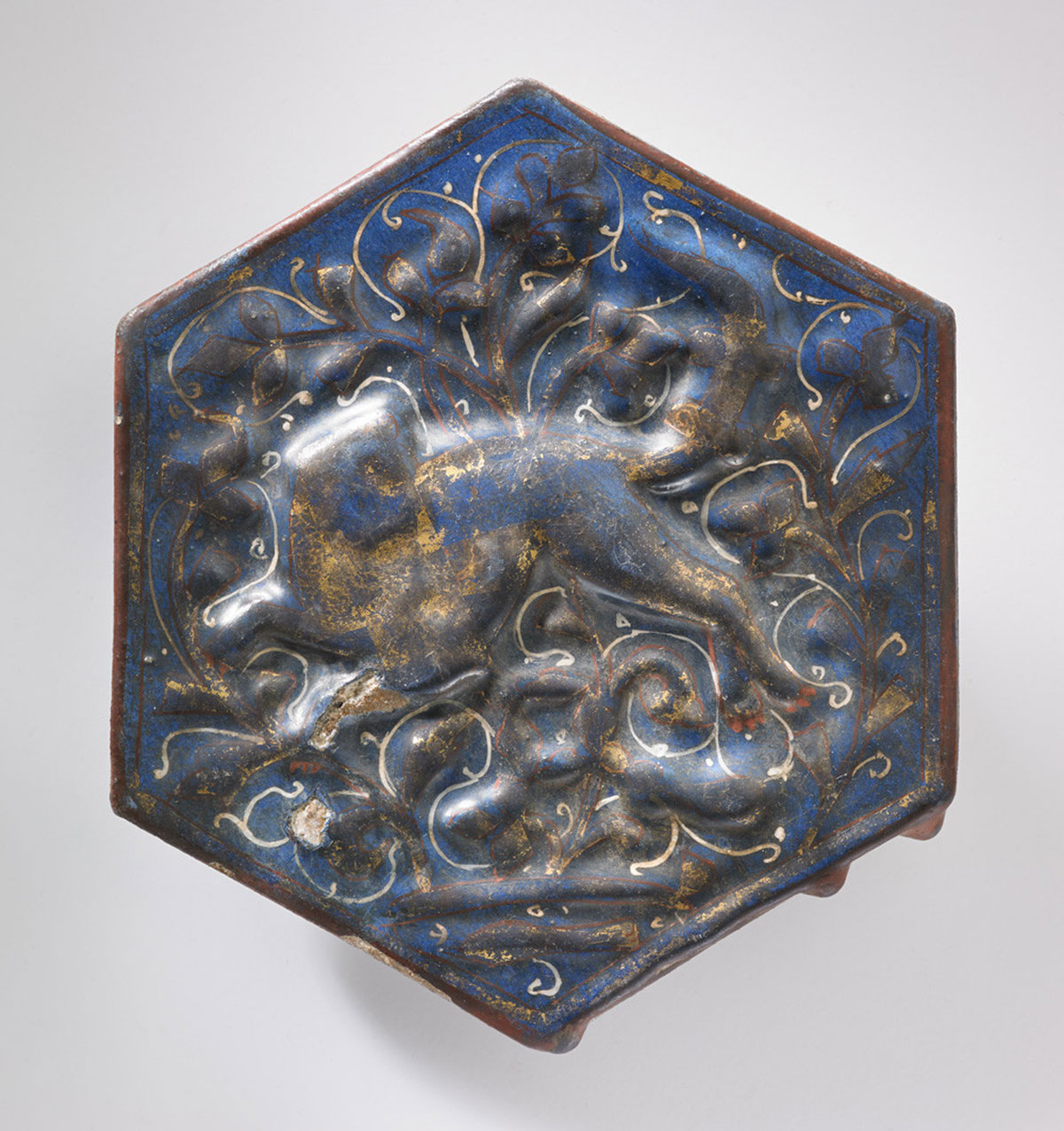In December 1894 Miss Ellen Georgiana Tanner FRGS (1847–1937) set off from Victoria Station for Marseilles, took a merchant steamer through the Red Sea, Gulf of Aden, and Persian Gulf to Mesopotamia, and up the River Tigris to Baghdad. Tanner was accompanying Emma Mockler, wife of the British Resident at Baghdad, who was returning to the city: ‘as we came in sight of Baghdad it looked like a fairy city with the palm-fringed river, orange gardens, the houses on the water side like Venice, and all her mosques and minarets gleaming in the yellow evening sunlight.’1 It was during this journey that Tanner decided to visit Persia after an acquaintance ‘spoke of its scenery, its ruins and its climate with an enthusiasm that fired my already stimulated imagination and fixed a floating fantasy not to stop short in Mesopotamia’ (I, 2). Tanner headed for the port of Bandar Bushehr at the foot of the caravan route to central Persia, and began a remarkably intrepid journey across the region on horseback, visiting the bazaars of Shiraz, Isfahan, and Kerman along the way. The journey marked her emergence as a collector: years later, she would donate her unusual collections of Persian art to several UK museums.
Ellen Tanner was the elder daughter of a wealthy attorney-at-law, William Tanner. The family lived at Frenchay House, just outside Bristol. Tanner’s mother had died when she was a child and she spent much of her adult life caring for her father. On his death in 1887, she and her sister each inherited the sum of £18,000, while their two brothers received the family’s shipping and business interests. By then in her late forties, she travelled widely throughout Europe and to Egypt, Turkey, and India, before making her first visit to the Middle East. Tanner is one of a group of ‘intrepid emigrants, formidable travellers and driven philanthropists’ subverting the ‘breathless inadequacy model of bourgeois femininity’ queried by Amanda Vickery.2 Yet unlike a number of her equally audacious or philanthropic contemporaries, Tanner’s name is all but unknown today.
Ellen Tanner’s monumental journey is detailed in her own words in ‘By Road and River: Journal of Journeys in Persia and Mesopotamia’, written using the notes she took en route and compiled once she returned to Baghdad in 1895. An unpublished typescript of this three-volume manuscript is held by Bristol Museum & Art Gallery. Deploying the conventions of a travelogue, Tanner combined practical details of her journey, travel arrangements, and accommodations with historical overview and sociological observation, often drawing from other Victorian sources but with a personal and at times humorous account of her impressions of the towns, sights, people, and handicrafts she encountered. Of Shiraz, Tanner wrote:
I explored the famous bazaars, reputed the finest in Asia, and certainly never before or since have I seen their equal. It is true that I have not yet visited Constantinople, but neither those of Cairo, Tunis or Baghdad approach them either in architecture or in the goods for sale. (I, 77)
Tanner would travel twice more to the region, in 1897–98 and 1903–04, and although her written accounts of those journeys do not appear to have survived, her earlier writing, along with the literature and biographies of her better-known contemporaries, tell us something of her story (Fig. 1).
Tanner’s companions on her third and final visit to Iran were Captain Percy Molesworth Sykes (1867–1945), who held an official position in Kerman, his sisters Ella Sykes (1863–1939) and Ethel Sykes (1864–1945), and their cousin Herbert Rushton Sykes (1870–1952). Of this trip, Herbert Sykes wrote in a lecture given to the Manchester Geographical Society on 19 March 1907:
It was on the 10th of October, 1903, that I left Yezd for a journey of over 400 miles across the Lut to Meshed. I was accompanied on that occasion by two ladies who are, probably, the first two European ladies to have crossed the Lut by this route. Miss Tanner was paying her third visit to Persia, having during the previous sixteen years of almost constant travel, visited nearly all the quarters of the globe.3
The Sykes family’s photographs of this trip are the only known images capturing Ellen Tanner during her travels (Figs. 2, 3).4 A later passing reference to ‘the doughty Miss Tanner’ appears in a biography of Percy Sykes.5 Tanner’s obituary in The Times, as one of the few sources to mention the details of her life, merits quoting in full:
Miss Ellen Georgina [sic] Tanner, F. R. G. S., only surviving daughter of Mr. William Tanner of Frenchay Park, Bristol, died at Bath on Friday at the age of 90. Of her a correspondent writes:
An adventurous old lady has passed in the death of Miss Ellen Tanner, who planned out travels in the Near East in the nineties which few Victorian women attempted or achieved. In following some of the country exploited by Miss Bell she was the second [British] woman to go unattended, except by native drivers and carriers, through Persia. She moved from Baghdad to Teheran, averaging 30 miles a day, and estimated the distance to be 588 miles without using the shortest cuts over the hills. This Persian adventure occupied her from Christmas Day, 1894, to the late autumn of the following year, and her diaries make interesting reading. For she had the gift of writing, and as a young woman had published by Blackwood several novels of the three-volume type.
At the end of Edward VII’s reign she thought she would revisit the Middle East as a change from India, China, and Japan. So she travelled again unattended via Somaliland to Abyssinia in the days when the old Emperor Menelek was on the throne — by no means, as she wrote, secure, because he was a very sick man in the hands of his masterful Empress. She wintered in Addis Ababa in 1910 and wrote delightfully of her experiences. Bed-ridden for the past three years, she enjoyed the memory of her adventurous travels, which she was never tired of telling. She will be buried to-day near Beckford’s tomb in the shadow of the ‘Folly’ he erected at Lansdown.6
As a published author who was elected to the Royal Geographical Society (RGS), there is a contrast between Tanner’s reputation in her day versus her subsequent lack of recognition. Tanner is omitted from later accounts of pioneering women travellers or British activity in the Middle East, despite her journey representing a number of firsts.7 This stands in contrast to archaeologist Gertrude Lowthian Bell (1868–1926), whom the obituary writer acknowledges. Tanner is one of a number of women, as explored by the articles in this issue of 19, whose contributions to the history of taste-making and museum collecting have been erased or overwritten. This article sets out to explore why Ellen Tanner’s personal history and her engagement with cultural philanthropy, as well as the scope and nature of the late-Qajar art she collected, had not been examined until a recent research project and exhibition at the Holburne Museum, Bath.8
Persia and Mesopotamia: travellers in the British Empire
Persia and Mesopotamia held great strategic importance for the British Empire. British involvement in financial, military, and trade activities in Persia had been growing since the start of the nineteenth century and it became a focus of diplomatic and economic attention.9 But it was not only Britain who vied for power in the region: Persia was caught up in the Great Game. French, Russian, and Turkish trade and expansion policies, and wider European upheavals, had a major impact on Persia’s economy and development throughout the nineteenth century.10 Although it was not officially part of the British Empire, British activities in Persia have been characterized as the ‘economic colonization’ of the country.11 From the 1860s Britain invested in a vast programme to improve the infrastructure of the Indo-European telegraph system, enabling communication across the British Empire as far as India, aimed at protecting its imperial interests there (Fig. 4). Iran was an important trade partner, and as well as seeking lucrative concessions to develop infrastructure, Britain flooded the region’s markets with its own exports of textiles, metals, and other industrial products, which had a direct impact on the country’s finances at a time of great upheaval under the Qajar dynasty (1785–1925).12 As Tanner commented, ‘the bazaars at Bushire, Bussorah, and Baghdad are full of Manchester goods.’13
Such imperial expansion was accompanied by a growing number of British citizens on administrative and diplomatic postings to the region and, as such, British travellers — including women — became increasingly common. Gertrude Bell visited Iran in 1892 to see her uncle Sir Frank Lascelles who was posted to Tehran. Isabella Bird Bishop (1831–1904) travelled there in 1890 with Major Herbert Sawyer. Ella Sykes accompanied her brother, Percy Molesworth Sykes, to set up the consulate at Kerman in 1895 and lived in Persia for several years. The discourse on Western women travellers has tended to divide them into the ‘atypical’, recognized as pioneers, and the ‘amateurs’ whose experience is subsumed by that of their male relations (Melman, p. 25). Neither term quite applies to Tanner, who was particularly unusual in not being attached to a husband or brother with an official position. She noted in her journal that
this highly interesting, and to most people entirely new part of the World in spite of its ancient splendour of civilization and tradition, must to women at least remain inaccessible, unless like me they are fortunate enough to have connections or friends in Mesopotamia who can and will put them up, for hotels there are none. (I, 7)
Such connections allowed Tanner to stay at the British residencies or legations (embassies) at Baghdad and Tehran, to socialize and travel with notable figures of the time, and to procure the necessary letters of introduction from friends and acquaintances along her route.14 For her journey through Iran, Tanner engaged two Chaldean Christian (Assyrian Catholic) guides, Yusef and Hannah, but was otherwise unaccompanied. Unlike Bell, she spoke no Persian and communicated with Persians in French if they spoke it. She travelled with a great deal of paraphernalia, from the solar topee and tent lent to her by the Mocklers, to her treasured ‘old gutta-percha travelling bath […] which I bought of Elvery in Conduit Street more than six years ago, and that has been to India, Egypt, Spain, Greece, and in short, has travelled everywhere with me’ (I, 52). Tanner frequently references her saddle and laments the inadequacy of Persian horses unless they have ‘been through the hands of a European’ (I, 41). She stayed in caravanserais, which ranged from the well cared for to the derelict: ‘the Ahmidi caravanserai was large, and one of that superior sort that has in the middle of each side of the square, upper rooms, accessible by a ladder-like stair’ (I, 43–44) (see Fig. 4). Where there was no suitable room, she stayed in a tent: ‘a quadrilateral entered by an arched gateway […]. To secure privacy the plan ensued is to hang a carpet, shawl or any sort of curtain […] and there was one’s bedroom!’ (I, 42–43) (Fig. 5). An alternative was to stay in a telegraph house, ‘one of the usual wine-bin like compartments, the key […] only given up to telegraph officials, and Europeans travelling’ (I, 67–68). Due to the extreme heat most travel was undertaken at night, so Tanner would arrive early in the morning at each stop and set up camp, before exploring the locality as it began to cool.
Tent panel, hand-printed on cotton, Iran, nineteenth century. T13, given by Miss E. G.Tanner in 1927. © Holburne Museum, Bath. Photo: <www.tonygilbert.co.uk>.
‘At the risk of tiresome reiteration I must say again that I can never by any possibility experience greater or more delightful hospitality and kindness than I met with in Persia’ (I, 144). Any social visit would be preceded by sending ahead gifts to the host, followed by an elaborate tea, consisting of trays of sweetmeats, sherbet, and sweet tea: ‘Afternoon tea in Persia is accompanied by cucumbers and piles of fresh lettuce, of which the company eat freely, dipping the lettuce into little glasses which have a mixture of honey and vinegar in them’ (I, 78–79). Otherwise, her sustenance consisted of tinned food, dry biscuits, boiled milk, and arrowroot (used to make a pudding similar to tapioca), and occasionally laudanum and brandy when she became sick from the water. She had lost three stone by the end of her journey through Iran and Iraq. Tanner keeps a running note in her journal of the untimely deaths of fellow travellers, mostly due to disease.
As well as connecting with the network of British officials and acquaintances in the region, Tanner had clearly engaged with the wider travel literature of her day. In common with other contemporary writers, she refers in her own journal to Sir John Chardin’s account of his travels and experiences in the Safavid era (1501–1736), Travels in Persia (1673–77), and the ‘lively […] eminently readable’ Jeanne Dieulafoy (a pioneering archaeologist whose husband was buying Persian art for the Louvre) (I, 20). Her most frequently cited source is George Curzon, whose Persia and the Persian Question (1892), written following his 1889–90 tour of Persia, was the most recent account of the region’s geography, history, architecture, and customs. Tanner carried this large, two-volume book on her often arduous journey, studying it closely, showing plates from it to people she encountered, describing it as ‘the best guide book one could desire to have […] never out of my hands on this journey’ (I, 71). As Mrs Bishop noted, ‘[Curzon’s] volumes may fairly be described as “exhaustive”.’15 Tanner occasionally took delight in correcting Curzon, particularly over underestimating distances, which she attributes to the fact that short cuts are ‘not feasible with a string of baggage animals or a takt-i-rewan (litter)’ (I, 72). The arduousness of travel in the desert regions — and the British presence across Persia in even remote areas — comes through:
All counted we formed a procession of twenty-three animals, counting the baggage mules and donkeys, as we straggled out on the plain, a stony sandy desert as bare of vegetation as one’s hand. There is never any road, only mule tracks, and in winter, when water is out on the plain, the traveller finds his way principally by following the telegraph posts. (I, 37)
As Tanner might have been aware as she painstakingly recorded her own experiences of travelling in the region, by the 1890s women were key contributors to the growing body of literature about Persia, its history, and its people. In 1891 Mrs Bishop published Journeys in Persia and Kurdistan; Gertrude Bell’s Safar Nameh: Persian Pictures came out in 1894; and Ella Sykes’s Through Persia on a Side-Saddle was published in 1898, followed by The Story Book of the Shah; or, Legends of Old Persia (1901) and Persia and Its People (1907). In 1902 Ella Sykes read a paper at the Royal Society for the Encouragement of Arts, Manufactures and Commerce (RSA) titled ‘Domestic Life in Persia’. In the discussion that followed, the RSA chairman commented:
It was rather a remarkable fact that of the authors who had written about the less well-known parts of Persia during the last quarter of a century, two of them, Mrs. Bishop and the reader of the paper [Ella Sykes] were ladies.16
While Bishop’s own reputation was firmly established by the time her writings were published, Ella Sykes was at pains to show her brother’s authority and expertise as a basis for her own. The opening paragraph of Through Persia on a Side-Saddle sets this out:
This book has no pretensions to be either historical, scientific, or political being merely the record of a very happy period of my existence, which I have, in a way, re-lived by writing about it. My information, however, may claim to be correct as far as it goes, my brother, Captain Sykes, who has travelled for some years in Persia on Government service, having revised my manuscript.17
Tanner could not herself have met such a standard, which may account for the fact that her journals were not published at the time or subsequently.
Ellen Tanner was elected Fellow of the Royal Geographical Society on 23 June 1913.18 Although women were for a short period in 1892 permitted to be elected as fellows (and Mrs Bishop was admitted during this window), this privilege was rescinded the following year and only in 1913 were women formally allowed to join again following a twenty-year campaign.19 Tanner was elected with a group of seven other women and sixteen men admitted at a meeting chaired by The Right Hon. Earl Curzon of Kedleston, President of the RGS. Some years earlier, as an RGS council member, Curzon had fiercely opposed the admission of women as fellows, setting out his objections in a series of letters to the editor of The Times.20 On 30 May 1893 he wrote:
We contest in toto the general capability of women to contribute to scientific geographical knowledge. Their sex and training render them equally unfitted for exploration; and the genus of professional female globe-trotters with which America has lately familiarized us is one of the horrors of the latter end of the 19th century. In our teeth are thrown the names of one or two distinguished ladies, such as Mrs. Bishop, whose additions to geographical knowledge have been valuable and serious. But in the whole of England these ladies can be counted on the fingers of one hand; and in the entire range of modern geography I question if history will preserve the names of half that number. (Curzon, p. 11)
By 1912 Curzon had accepted that women had earned the right to recognition by the RGS as contributors to the discipline of geography, although the women admitted ‘were, in the main, prominent and well-connected […]. For those who lacked professional authority, knowledge of the empire and imperial connections formed the basis for a convincing case’ (Bell and McEwan, p. 306). Morag Bell and Cheryl McEwan note that the other women admitted to the RGS at that time had ‘produced detailed travel narratives’ (p. 302). For instance, Ella Sykes was elected to the RGS in December 1913, having by this time published widely, including multiple articles in the Geographical Journal.21 Tanner’s travel journals, which while unpublished were clearly known to the writer of her obituary, might well have supported her case for admission. We can only speculate as to whether Curzon, particularly given his own knowledge of Persia, would have counted Ellen Tanner among those women worthy of recognition, although she was among the earliest to be admitted once the exclusion of women was overturned. Curzon’s question, however, of whether history would preserve the contribution of women is apt, since Curzon and his contemporaries were largely responsible for writing that history.22
Tanner’s perspectives on Persia
As previously discussed, Ellen Tanner was one of a number of women contributing to a growing Western narrative on Persia in the 1890s. Although Western women were clearly becoming a more frequent sight in the region, Tanner’s appearance and position did not go unremarked by the people she encountered. After an afternoon in Shiraz, Tanner wrote:
They were full of interest to me, and for hours I sat on the floor with my hostess, who found me an unfailing topic of conversation for her visitors. The questions they asked about me were endless, and always the same, such as Why had I come? and What next did I mean to do? Why was I not married? and How did I put my clothes on? All asked with a great show of interest, and much laughter and merriment. (I, 78)
In Kermanshah Tanner described the reaction:
The women in particular chattering among themselves and pointing to the fashion of my garments as a marvel, and as I doubt not, a scandal, for I was in a cotton shirt and dark skirt, and on my head had a rather battered old sailor hat, with a blue gossamer veil to protect my eyes from the sun and dust. (II, 36)
In contrast to Mrs Bishop’s ‘practical traveling costume of jacket and long skirt worn over Turkish trousers’,23 her usual travelling attire was
the thick skirt of an old hunting habit, boots and knickerbockers, and a white washing silk shirt […]. I had also ’59 gauntlet Hexham tan gloves as unless well and thickly covered, one’s hands get terribly blistered with the sun, and cause one great discomfort. (I, 42)
To go around the bazaars, Tanner adopted the Persian chadar, a head-to-foot cover typically made of black silk or glazed calico:
After a rest and some food, I put on my disguising Persian clothes, as I wanted to explore Yezdikhast without being crowded round by the curious inhabitants […], doubtless the people perceived I was a Feringhee [foreigner] from my walk, as I cannot attain to the Persian shuffle; but being veiled duly, and bundled up in the chadar, and full baggy trousers all Persian women wear, I presented nothing to shock and astonish their eyes, and passed unimpeded on my way. (I, 130)
As a woman she could not enter the mosques, although in Baghdad, thanks to ‘an enlightened Mahommedan gentleman close by […], from his roof top we looked over the [Kadhimiya] Mosque, which for beauty I still think the finest I have ever seen, so exquisite are its proportions’ (I, 18). Tanner could, however, visit women in private contexts:
I saw something of Persian interior life […] my hostess taking me into some of the anderuns [harem, or women’s area of the house]. The anderun dress of Persian women of the upper classes is ugly, and indecent, being an exaggerated ballet costume […]. The regulation length of a fashionable woman’s skirt in Shiraz, I was told, is the span of the wearer’s hand and the width of her four fingers laid together, and, judging from those I saw, I quite believed it. Sometimes white cotton tights were worn under it, but more commonly nil, and the amount of bare skin visible was great. No male eyes behold them, except those of their own husbands of course. (I, 86)
The majority of accounts of Persian women incorporate the trope of the harem, yet as Joan DelPlato has argued, the harem drew the ‘ambivalence (or multivalence) of colonialist attitudes’, but such women-only spaces were nonetheless an area in which they were able to contribute a unique perspective.24 It is perhaps in this context that Tanner describes her own experiences. Returning to the discussion on Ella Sykes’s 1907 lecture, the chairman wrote that
the subject which Miss Sykes had chosen for the paper reminded him that there was no part of the world in which women had so great an advantage over men as in the East, where the domestic life of a large section of the inhabitants, at all events of the upper classes of society, was so strictly veiled from the gaze of all Europeans who did not happen to belong to the fair sex. (Sykes, ‘Domestic Life’, p. 103)
This gave a particular interest to the writing of women on this topic. In contrast, her brother Percy Sykes could only comment, ‘In Persia women are closely veiled.’25 Victorian women’s accounts of the harem often oscillate between discomfort and a romanticized view of women’s freedoms.26 Tanner’s own conversations with Persian women touch on this tension as she recounts a visit to the ‘enlightened’ Nawab Haider Ali Khan in Shiraz:
His wife, and he had only one, was a buxom dame, and enlightened also. During her visit some other Persian ladies present were plying Mrs. G [Gerrard, Tanner’s friend] with questions concerning me, marveling as usual at my having no husband and being able to go about the world without one. ‘It is wonderful, it is miraculous!’ they said. ‘The Khonum is free as air! Would to God we were like her!’ But the Khonum of Haider Ali shook her head smiling and dissented. ‘I am content as I am, I chose my husband myself, and I am a happy woman.’ (I, 87)
Religious activity was another context in which women came into close contact. Following a visit to a mission outside Jolfa, where Tanner met ‘Miss [Mary] Bird (a cousin of the celebrated traveller of that name)’, Tanner raises concerns about the potential damage of the work of Christian missionaries where they disregarded local tradition (I, 136). As Nima Naghibi argues, ‘while gender and class were certainly important factors in how women missionaries and travellers saw and related to the Orient, their active participation in the “discursive colonization” of Persian woman cannot be denied’ (p. 12). Tanner voices support for the work of the ‘Jesuits and kindred orders of the Roman communion, who actually live amongst the people unencumbered by family ties’, contrasting their focus on health with that of other missions’ priorities (I, 145). Although in her writing Tanner is not explicit about her own Christian affiliation, certainly such views suggest a Nonconformist viewpoint, and my research suggests her family had Quaker connections.27 In places her humanity shines through: she expresses concern about the work of missionaries in the region who are celebrating the conversion of an epileptic woman, ‘divorced from her husband as a bad bargain’, but Tanner is concerned that to renounce Islam is at pain of death, and worries for the woman’s life (I, 144).
As a single woman without attachments, and potentially a Quaker herself, Tanner’s position is distinct from those of her contemporaries, and at times the views she expresses are equally so. She does not, as has been posited about Ella Sykes, unequivocally represent ‘British involvement in Persia as paradigmatic of the Empire’s benevolence and of its commitment to guiding primitive races along the path to democracy and enlightenment’ (Naghibi, p. 33). Instead, Tanner steps into reporting mode, making it difficult to read her own view:
I am told it is far better to profess Christianity in Persia than to be a Suni Mahommedan, as the Persians are all bigoted Shiahs, and regard the Sunis much as an extreme ritualist of the Anglican church does an evangelical or a dissenter. (I, 32)
Similarly, where Tanner’s journal touches on politics, there is a sense that she was returning to Curzon’s account for guidance, as their views are similar:
The Residents on the Persian Gulf and at Baghdad have to uphold our prestige in the eyes of the Turks, Arabs and Persians, who, like all Orientals, attach great importance to externals […]. The Resident at Bushire therefore has a sepoy guard, supplied by the government of India […]. He is, in fact, the visible emblem of the British Empire and guardian of our political and trading interests. (I, 34)
Tanner’s perspective, whether describing her interactions or attempting to provide context, remains enigmatic and at times contradictory. In contrast to her somewhat ambiguous position as commentator, Tanner also took on the more active role of collector as she travelled the region.
Collecting the arts of nineteenth-century Persia
Ellen Tanner began to collect Persian art at a moment of great interest in its production and dissemination. Collecting for museums was a key part of Britain’s political and economic strategies and empire building, and many of the individuals undertaking this work held official posts. Robert Murdoch Smith (1835–1900), director of the Persian Telegraph Department in Tehran, became an agent for the South Kensington (later Victoria and Albert) Museum in 1873.28 He made important acquisitions for the V&A from dealers in Tehran, some of which were aided by his relationship with the Qajar ruler Nasir al-Din Shah (1831–1896).29 At the time, the museum was collecting outside European traditions to counteract what critics perceived as the ‘catastrophic national failure of aesthetic taste’ on show in the Great Exhibition.30 This would culminate in the opening in 1876 of the Persian Court, a gallery displaying this new and expanding collection, and in Murdoch Smith’s publication, Persian Art (1877) (Carey, p. 13).
Although Murdoch Smith was acquiring historic Iranian works of art, in Persian Art and his purchases for the museum, he made the case for the importance of Qajar art in itself, rather than simply as a less-accomplished descendant of the celebrated artistic output of Persia under Moghul emperor Shah Jahan (1592–1666) or the region’s creative flourishing during the Safavid era (1501–1736). Murdoch Smith’s acquisitions celebrated contemporary Persian art, albeit as an applied art: ‘art in Persia is essentially art as applied to manufactures’, interesting not ‘from an artistic point of view, but rather as illustrations of costumes, national types, &c.’.31 As Stephen Vernoit argues, there was a growing interest in ‘making enquiries into vanishing craft traditions, but the cultural dimension was often lacking’.32 Tanner took a similar taxonomic approach to collecting Persian art, echoing these viewpoints even as she shows a genuine interest in the objects she was collecting.
The eighty-five objects Tanner donated to the Holburne Museum are striking in their variety: chased and hammered metalwork, a peacock and hawks of steel inlaid with gold and silver (Fig. 6); ceramics; miniature enamel cups and saucers; Mashad soapstone vessels; ceramic and brass hookahs and kalians; lacquer book covers, a pen box, and several mirror cases (Fig. 7); a painting on glass (Fig. 8); elaborately carved pearwood; and embroidered and woven textiles. Tanner’s journal gives clear insight into the specific craft skills of particular towns. Isfahan, the old Safavid capital, was still known for its metalworking and steel traditions; Yezd for its textiles and marble, ‘very beautiful, each step being a solid block of the most lovely semi-translucent marble, faintly tinged with pinkish yellow tones. Nowhere, not even in Athens, have I seen marble of more exquisite colour’ (II, 5). The majority of the material bought by Tanner represented contemporary production bought at bazaars and made by craftspeople working in a local Persian tradition.
Peacock, steel with inlaid gold and silver decoration, before (left) and after (right) conservation, Iran (Isfahan), late nineteenth century. F131, given by Miss E. G. Tanner in 1932. © Holburne Museum, Bath. Photo: <www.tonygilbert.co.uk>.
Mirror case, lacquer, Iran, nineteenth century. F65B, given by Miss E. G. Tanner in 1926. © Holburne Museum, Bath. Photo: <www.tonygilbert.co.uk>.
Reverse painting on glass, pigment, glass, wood, Iran, nineteenth century. M183A, given by Miss E. G. Tanner in 1926. © Holburne Museum, Bath. Photo: <www.tonygilbert.co.uk>.
Although in the surviving written sources Tanner does not explicitly discuss the impetus behind her purchases, her narrative suggests she was buying on a large scale. Might Tanner’s purchases have been viewed in the context of female consumer as ‘urban pleasure seeker’, albeit on an international stage?33 While other women travelling in Iran also purchased items from the bazaars, the comprehensiveness of Tanner’s purchasing seems deliberate and strategic. Tanner was not unique in exerting great effort towards the mission of collecting: as Ann Eatwell notes of Lady Charlotte Schreiber, ‘a full day of seven or eight hours, often on foot, was a normal part of any expedition […]. She was the stuff of the archetypal Victorian explorer.’34 Mrs Bishop, who did not purchase from the Persian bazaars herself, noted:
The temptations are great. I really need many things both for my own outfit and for presents to the Baklitiaris, and pedlars come every day and unpack their tempting bundles in the small verandah. Europeans and no women of the upper classes can enjoy the delights of shopping in Persia, consequently the pedlar is a necessary institution. (Mrs Bishop, I, 260)
Tanner paid for the items from the bazaars either in cash or with letters of credit from the Imperial Bank of Persia. Her journal offers insights on some of the practicalities: Tanner relied on agents to transport the items she had brought home, with mixed success: ‘though I entrusted the packing to the Persian Gulf Trading company, it arrived in London in a wrecked state, and I was glad not to have ventured upon the faience, beautiful as some of it was’ (I, 148). This may account for some of the old repairs on items now in the Holburne’s collection, such as the rivets holding together a Chinese stoneware jar bought in Baghdad in 1896 (Holburne P1).
Iran’s textile traditions are particularly well represented, with a signed piece of silk with a peacock design by Kuli-Kani from Kerman (Fig. 9), a printed cotton tent hanging (see Fig. 5), and a great variety of traditional embroidery, including an elaborately embroidered pateh-duzi table cover (Fig. 10):
I told Yusef to ask one of the chief silk merchants to send me some specimens of Kashan silk weaving, and embroideries for me to inspect at my leisure, and returned after two or three hours sight-seeing delighted with Kashan, which I think Mr. Curzon speaks too disparagingly of. (I, 163)
Fragment of brocade, silk, Iran (Kashan), nineteenth century. T15, given by Miss E. G. Tanner in 1927. © Holburne Museum, Bath. Photo: <www.tonygilbert.co.uk>.
Embroidered table cover, wool and silk, Iran (Kerman), nineteenth century. T12, given by Miss E. G. Tanner in 1927. © Holburne Museum, Bath. Photo: <www.tonygilbert.co.uk>.
Tanner’s evident interest in textiles emerges in her unusually detailed descriptions of these purchases, reflecting her prior interest in such material as a collector:
Late in the afternoon the dellal arrived with his wares, and I bought some of the white silk embroidered squares of a species of fine silk canvas used by the women as head coverings or veils after the bath. They are as far as I know only worked here, and are beautiful and uncommon. I have met with specimens of this work in the embroidery shops on the Riviera, and also at the best London shops for Eastern embroideries; but they are few and expensive, and I have always been told were from Kashan in Persia. I have always admired this work, and bethought myself of it when I was finally at Kashan, and bought several pieces reasonably enough [including Fig. 11]. I also bought a handsome web of ivory-white silk of fine texture, with a singular damasked pattern of peacocks on it. It was roughly finished compared with Indian or European silk, but very quaint and charming, and at the end of the web was an inscription in Kufic characters, woven into the fabric, which being a dead language I could not get translated. The effect was that of a fine white damask tablecloth, and I carried off my web highly delighted with it. (I, 164)
Embroidery, silk on muslin, Iran (Kashan), nineteenth century. T14, given by Miss E. G. Tanner in 1927. © Holburne Museum, Bath. Photo: <www.tonygilbert.co.uk>.
Tanner acquired examples of naksh (or naqšeh) embroidery, most commonly produced in Isfahan and Yezd, but also Shiraz and Kashan, including an embroidered trouser panel (Fig. 12) and needlework box made from a repurposed panel, and lined with a printed, glazed fabric (Fig. 13). Several panels of naksh embroidery were sewn together to make women’s trousers, and these panels were in such high demand that there were stories of husbands at the bazaars unpicking their wives’ garments for sale to Europeans (Wearden and Baker, p. 59). Murdoch Smith’s brief descriptions of the textile traditions of Iran in the 1870s echo Tanner’s account, but the dates of her visit combined with her journal offer an insight into what was being sold in this specific period; Tanner’s purchases are modest or fragmentary and therefore present a snapshot distinct from holdings now in the V&A (Murdoch Smith, pp. 24–28).
Trouser panel, silk and cotton, Iran, nineteenth century. T24, given by Miss E. G. Tanner in 1928. © Holburne Museum, Bath. Photo: <www.tonygilbert.co.uk>.
Needlework box, silk, cotton, paper, Iran, nineteenth century. T24, given by Miss E. G. Tanner in 1928. © Holburne Museum, Bath. Photo: <www.tonygilbert.co.uk>.
The city of Abadeh was known for its carved pearwood, of which Tanner set out to buy some examples:
Here I got some of the pear-wood carving eulogized so highly by Mr. Curzon, and interviewed the best wood worker in the place. The work is excessively delicate […] done with a common small knife; the wood whittled down to a paper-like thinness; the bowls semi-transparent, and the handles carved in wonderful and intricate designs. It seemed almost incredible that such results could be attained with such rude implements. (I, 124)
Tanner bought some ladles to serve sherbet (Holburne F71A and B), a refreshing drink made with herbs and fruits, and in her journal described the often elaborate experience of taking tea in Persia:
We found the lady seated in state expecting us, sherbet in a handsome china bowl with a beautiful ladle of the delicately carved Abadeh pear wood work to serve it with, sweet meats, and pale, excessively sweet tea in small glasses. All this on the carpet, set out on trays before her. (I, 57)
Tanner’s acquisitions reflect her interest in finely carved everyday objects; her journal descriptions highlight the links between her experiences of using such decorative objects on her travels and collecting them.
In Shiraz Tanner bought articles in hammered silver, including an opium pipe and a mirror frame with motifs from nearby Persepolis and Naqsh-e Rustam (Holburne F76 and F70). Tanner visited both archaeological sites herself, writing of Persepolis: ‘I refrain from attempting to sketch the history of Persepolis, which I leave to those far abler pens, and only record my impressions of the entrancing beauty and death-like stillness of these vast and solemn remains of antiquity’ (I, 106–07). Again, Tanner returns to echoing previous writers’ texts rather than claiming her own expertise.
The use of motifs from the monumental friezes and buildings of the city on contemporary crafts reflects a growing interest in Persian history during the Qajar period. As Ulrike al-Khamis and Katherine Eremin argue, the varied sources for the decoration on Persian metalwork were
undoubtedly taken from earlier canons of Iranian iconography or can be traced to contemporary lithographies of popular lore, others are more enigmatic […] and may make direct reference to the jesters, acrobats, mummers wearing masks, monkeys or marionettes encountered as part of public entertainment at the time.35
In 1894 the British Consul at Isfahan described the locally made metalwork:
Some very pretty lantern, flower vases, and candlesticks are made, both engraved and perforated à jour, quite the most pleasing effect is produced when the two systems are combined. If anyone who wishes to see and know what this brass ware is really like, I can but advise them to go to the South Kensington Museum. (al-Khamis and Eremin, p. 125)
While Qajar metalwork had a moment of great popularity in the 1870s, it was only actively collected by the V&A for a short time.36 By the 1930s the perception of this material had changed and many items of Qajar-period brasswork were deaccessioned (Carey, p. 234). This area is particularly well represented in Tanner’s collection, with two sets of pierced fretwork vases from Isfahan (Fig. 14). The survival of Tanner’s metalwork collection — in particular the fact that it includes objects with a range of materials, styles, and uses, and that many can be tied to specific purchases and locations — therefore gives an unusual snapshot into the changing traditions of local Persian artisanal metalwork in the late-Qajar period.37
Vases, pierced and chased brass, Iran (probably Isfahan), nineteenth century. F66A and F66B, given by Miss E. G. Tanner in 1926. © Holburne Museum, Bath. Photo: <www.tonygilbert.co.uk>.
Although Tanner’s focus was on modern production, she is clearly also implicated in the wholesale purchasing of historic artefacts in Iran at this time. Two glass vessels of a form variously referred to as rosewater sprinkler, swan-necked vase, or in Persian, ashktan (container for tears) (Fig. 15), are described as ‘two old Persian tear bottles from a tomb at Hamadan excavated in 1896’.38 The form was first used during the Safavid period in the late seventeenth century, but tear-shaped vases were still being produced and sold at the time Tanner visited. Tiles were also a growing area of interest to collectors. In Karbala we learn that the makers were producing replicas of architectural tiles: ‘We spent a happy hour at a tile maker, where I ordered some to be made for me by the Persian makers after patterns of some old ones taken off the mosques’ (III, 7). Tanner donated a small group of historic tiles, including a panel of nine fritware tiles from Damascus (Holburne F56) and two cuerda seca tiles (Fig. 16) which once formed part of the decoration of a madrasah in the town of Khargird. Tanner did not visit the site while she was in Persia; she was given the tiles by Percy Sykes, who had bought them at a bazaar in Mashhad. The earliest piece in the collection is a lajvardina (‘lapis lazuli’) tile (Fig. 17), decorated in a distinctive combination of blue and gold, in a very rare moulded form of a leaping animal, made for Takht-i Sulaiman, the hunting palace built by the Mongol ruler Abaqa Khan (reigned 1265–82).
Rosewater sprinkler, glass, Iran (probably Shiraz), 1700–1800. C927A136A, given in 1920. © Holburne Museum, Bath. Photo: <www.tonygilbert.co.uk>.
Pentagonal tile, fritware with cuerda seca decoration, Iran (Khargird), 1425–75. F55A, given by Miss E. G. Tanner in 1926. © Holburne Museum, Bath. Photo: <www.tonygilbert.co.uk>.
Hexagonal tile, fritware with moulded, overglazed, and gilded decoration, Iran (Takht-i Sulaiman), c. 1275. C927A136X, given by Miss E. G. Tanner in 1920. © Holburne Museum, Bath. Photo: <www.tonygilbert.co.uk>.
As the Qajar government took action under pressure from religious groups regarding the removal of tiles from buildings, Murdoch Smith began to give less specific provenances.39 The historic tiles from the Holburne’s collection tell us something of that story. On one occasion Tanner bought items from a tomb that had just been excavated in Hamadan, and once took tiles from a site:
From the ruined palace adjoining the Aineh-Khaneh I abstracted three tiles from a small inner chamber leading into the bath. I was ashamed of myself for this act of vandalism, but it seemed to me seeing how these beautiful tiles were suffered to fall off and lie neglected on the ground, that they would be better appreciated by me than by the Persians. (I, 147)
Moya Carey characterizes this attitude: ‘The study of Iran’s […] ancient history, with its picturesque ruins and archaic languages and scripts, confirmed a noble past, in which European scholarship now took possessive interest’ (p. 26). When she gave it to the Holburne Museum, Tanner described the lajvardina tile as being ‘from a tomb at Hamadan, Iran’ — several hundred miles from Takht-i Sulaiman — but it is not clear whether she knew its earlier origin or was engaging in the deliberate vagueness practised by Murdoch Smith (Masuya, p. 50).
Murdoch Smith was by no means the only advocate for the arts of Persia. Notorious scholar-dealer and forger Arthur Upham Pope’s 1930 monograph presents a typical evaluation of Persian art: the historic arts ‘found their most complete and perfect expression in Persia’.40 However, his concluding chapter, ‘Contemporary Art in Persia and Future Prospects’, repeats a common dismissal of Qajar art:
For more than two centuries now art has steadily declined in Persia […]. Persia’s decline coincided with the mounting prestige of Europe. This would have been unfortunate enough for Persian art had Europe been at the height of some one of her great periods of artistic understanding, but the influence of Europe in Persia corresponded with the decline of European taste and all the atrocities of the ‘Age of Horror’ with its inept architecture, gaudy decoration and clumsy furniture swept into Persia, particularly from Russia, capturing the favour of the nobles and depriving the few existing artists of hope for important commissions. (Pope, p. 245)
Tanner donated her gifts to the Holburne between 1917 and 1932. If Upham Pope’s account reflected attitudes to Qajar art into the 1930s, it is easy to see how, after Ellen Tanner’s death, the interest of her collection along with her unusual story faded from view.41
Collecting women: Tanner’s legacy at the Holburne Museum
There is a renewed interest in rediscovering the stories of the women whose collections shaped late Victorian and early Edwardian museum collections. A number of recent exhibitions reflect this perspective: ‘Unbound’ (2 Temple Place, Bristol, 2020), ‘Intrepid Women: Fieldwork in Action, 1910–1957’ (Pitt Rivers, 2018), ‘The Remarkable Miss Breton: Artist, Archaeologist, Traveller’ (Bath Royal Literary and Scientific Institution, 2017), and ‘Bath to Baghdad: Ellen Tanner’s Collection of Middle Eastern Art’ (Holburne Museum, 2018), from which this research stems. A common reason for this lack of attention is minimal detailed provenance and cataloguing information. Accessions registers contain small hints as to the stories held within: we can trace Ellen Tanner’s address between 1917 and 1932 based on the entries in the Holburne’s ledgers, and the imperial measurements recorded give a surprisingly accurate method of rematching objects which have over time lost their museum number with their associated documentation. Tanner was recorded in the Holburne accessions registers as ‘Miss E. G. Tanner, F. R. G. S.’: a reminder that it was not until later in life — and crucially after her own recognition by another prestigious Victorian institution — that she gave her gifts to the Holburne.
As we have established, although Tanner is almost unknown today, this was not the case in her lifetime. Kate Hill’s study of women as donors to museums during the period from 1850 to 1914 notes that women donating to more than one museum were ‘almost all notable in their field’.42 As well as her gifts to the Holburne, Tanner was an early donor to the newly founded Bristol Museum & Art Gallery, giving around seventy items of mainly textiles and dress in 1906; and in 1927 she gave to Bath Royal Literary and Scientific Institution a collection of ‘Persian curios’ including a miniature silvered samovar set (which speaks to the Russian influence in the region) and a pair of dolls.43 She also gave a Sultanabad carpet to the V&A in 1915.44 Ahead of her donation these collections were probably displayed in her home, first at Parkside in Corsham, Wiltshire (where she was living in 1913); Cavendish Place, Bath (her home until 1916); and later the Lansdown Grove Hotel. While each donation has its own distinct character, Persian art was her focus. Given that Tanner had travelled extensively, why did she not collect and donate works of art from India, from Europe? Did she simply prefer to have these items on show in her home and as such delay their donation?45 Tanner’s account focuses on her travels rather than her later life, and so does not offer us an answer. We can wonder whether the timing of her donation, or her focus on Persian art — or indeed both — contributed to her subsequent obscurity.
At the time of Tanner’s donations, the Holburne would not appear to be an obvious destination for a collection of Persian art. The Holburne of Menstrie Museum was founded in 1882 by Mary Ann Barbara Holburne (1802–1882) who bequeathed the collection of her brother Sir William Holburne (1793–1874) to form ‘the nucleus of a Museum of Art for the city of Bath’.46 Holburne’s eclectic collection of English silver, Italian Renaissance bronzes and maiolica, and English and European porcelain and paintings was supplemented by an influx of gifts and bequests from the 1920s to 1960s which added to the museum’s reputation for eighteenth-century British paintings and European works of art.47
A significant number of women — Miss Tanner, Miss Hope, Miss Springfield, Miss Mildred Alice Carr, Mrs McNab, and others who gave bequests on behalf of their deceased husbands — gave objects which equally transformed the scope of the Holburne’s collection, yet these are not generally recognized as its strengths.48 These women donors gave small gifts, primarily (but not exclusively) of textiles, from seventeenth-century stumpwork to dress, lace, samplers, and embroideries from the UK, Europe, and the Middle East, which remain among the least well-researched and documented items in the collection. An account of the Holburne’s history by Philippa Bishop (curator from 1961), characterized this material as follows:
During the twenties and thirties rather surprising donations were accepted, such as a number of village emblems (the badges of local friendly societies), as well as Miss Tanner’s personal (and most idiosyncratic) collection of Persian metalwork and textiles, and even a group of baby clothes bequeathed by Mrs McNab.49
Many of these donors, including Ellen Tanner, gave multiple gifts over several years, demonstrating long-standing relationships with the museum. Yet, as in Tanner’s case, we know little about these women’s histories or their rationales for supporting the institution in this way. The official record within the accessions registers often consists solely of a name, the briefest description of the donation, and sometimes an address, yet such gifts had an ‘accidental or incidental’ impact on the Holburne, operating outside the official space of the museum while subtly transforming its character with their donations (Hill, pp. 47–48). In contrast a number of male donors of higher-profile gifts of British paintings and European porcelain, including James Calder, Orme Sargent, and MacGregor Duncan, held official positions as trustees of the museum. Have Tanner’s, and other women’s donations to the Holburne, been overlooked due to their content or the gender or identity of their donor?
Tanner’s gifts were remarkably well documented compared to other women’s donations. The collection is itemized in the Holburne’s accessions registers, and many objects are still accompanied by Tanner’s original handwritten labels, which add layers of provenance information (e.g. Fig. 13). The labels were clearly written sometime after the trip, and accordingly details are occasionally vague: ‘bought by the donor in Central Persia in 189_’. What makes Tanner’s collection extraordinary is not the overall quality of the individual pieces (although there are items of great beauty and rarity), but the fact that her collection exists at all, surviving changes in fashion and taste, museum-making and accessioning priorities, as well as years of being kept in inappropriate storage conditions within the ‘distinctly damp’ basement behind the grand facade of the Holburne’s eighteenth-century home as the museum went from one financial crisis to another (Philippa Bishop, pp. 12–13).
As Tanner’s obituary noted, ‘she will be buried to-day near Beckford’s tomb in the shadow of the “Folly” he erected at Lansdown.’50 Like that of William Beckford, Ellen Tanner’s history is inextricable from the shadow of the British Empire. As a European woman of means she accessed and benefited from the infrastructure of imperial activity and she thereby expanded her own horizons. Nonetheless, Tanner’s own story and contributions to institutional history were buried with her or their significance gradually lost. Ellen Tanner was both a pioneering woman and a supporter of empire; an impassioned collector and enthusiast, and an appropriator of Persian culture. There is a poignancy in her evocative descriptions of places that in recent years have been more familiar to us for the turmoil taking place there than their extraordinary history and culture: ‘The palm-fringed banks, the shipping, the creeks, and above all the dazzling sun-light of Bussorah [Basra] charmed me’ (I, 5). Many of these places felt as distant to a traveller then as today. Ellen Tanner gave to the Holburne Museum collections from Iran, from Syria, and from Iraq. That these objects are now in Bath highlights both the interest in the world that travelling can inspire and the fragility of cultural heritage. It is a salient reminder of Britain’s past involvement, much of it less than exemplary, in international affairs, and a chance to celebrate the extraordinary artistic and cultural output of the Islamic world.
Notes
- Ellen Tanner, ‘By Road and River: Journal of Journeys in Persia and Mesopotamia’, 3 vols (unpublished typescript, 1895), I, 13, Bristol Museum & Art Gallery. I am immensely grateful to Bristol Museum & Art Gallery for their kind permission to quote from the typescript of this journal. For an interactive map showing Tanner’s journeys, see <https://www.google.com/maps/d/viewer?mid=1OWasoARS1VHXUuEoNCmaxf4YMJ41YZLF&usp=sharing> [accessed 30 October 2020]. [^]
- Amanda Vickery, ‘Golden Age to Separate Spheres? A Review of the Categories and Chronology of English Women’s History’, Historical Journal, 36 (1993), 383–414 (p. 389). [^]
- Herbert Rushton Sykes, ‘The Lut, the Great Desert of Persia’, Journal of the Manchester Geographical Society, 23 (1907), 60–76 (p. 66). [^]
- These photographs, thought to be taken by Herbert Rushton Sykes, from a Sykes family photograph album, are reproduced with thanks to David Sykes. Copies of a number of these images are also held by the British Museum, part of a collection of six hundred glass lantern slides originally owned by Sir Percy Sykes. [^]
- Antony Wynn, Persia in the Great Game: Sir Percy Sykes — Explorer, Consul, Soldier, Spy (London: Murray, 2003), p. 113. [^]
- ‘Miss E. G. Tanner’, The Times, 22 November 1937, p. 14. [^]
- Tanner is neither mentioned in academic studies, e.g. Billie Melman, Women’s Orients: English Women and the Middle East, 1718–1918 (London: Palgrave Macmillan, 1992), nor in biographical compendia, e.g. Dea Birkett, Spinsters Abroad: Victorian Lady Explorers (Stroud: Sutton, 2004). [^]
- Although research by Kate Newnham at Bristol Museum & Art Gallery has highlighted Tanner’s story and the collections held at BMAG, the first published account of Tanner’s story was an exhibition catalogue by Catrin Jones, Bath to Baghdad: Ellen Tanner’s Collection of Middle Eastern Art (Bath: Holburne Museum, 2018), of which this article is an expanded version. [^]
- See Vanessa Martin, ‘An Evaluation of Reform and Development of the State in the Early Qājār Period’, Die Welt des Islams, 36 (1996), 1–24. [^]
- Peter Hopkirk, The Great Game: On Secret Service in High Asia (Oxford: Oxford University Press, 2001), pp. 32, 520. [^]
- Nima Naghibi, Rethinking Global Sisterhood: Western Feminism and Iran (Minneapolis: University of Minnesota Press, 2007), p. 2. [^]
- James Allan with Brian Gilmour, Persian Steel: The Tanavoli Collection, Oxford Studies in Islamic Art, 15 (Oxford: Oxford University Press, 2000), p. 86. [^]
- Tanner, I, 35. See also, Jennifer Wearden and Patricia L. Baker, Iranian Textiles (London: V&A Publishing, 2010), p. 23. [^]
- Including to Lady Durand (1852–1913), wife of the ambassador to Tehran, Sir Henry Mortimer Durand (1850–1924), at the British Legation. [^]
- Mrs Bishop (Isabella L. Bird), Journeys in Persia and Kurdistan, 2 vols (London: Murray, 1891), I, p. viii. [^]
- Ella Sykes, ‘Domestic Life in Persia’, Journal of the Society of Arts, 51 (1902), 95–114 (p. 103). [^]
- Ella C. Sykes, Through Persia on a Side-Saddle (London: Innes, 1898), preface. [^]
- ‘Meetings of the Royal Geographical Society, Session 1912–13’, Geographical Journal, 42 (1913), p. 208. [^]
- For a full account of the Royal Geographical Society’s eventual admission of women, see Morag Bell and Cheryl McEwan, ‘The Admission of Women Fellows to the Royal Geographical Society, 1892–1914; the Controversy and the Outcome’, Geographical Journal, 162 (1996), 295–312. Notably, the regional geographical societies and the Scottish Geographical Society admitted women in the nineteenth century while the RGS resisted. [^]
- Curzon’s objections were both reputational and constitutional, reflecting his anti-suffrage views. In a letter to The Times, Curzon wrote, ‘A further objection lies in the constitutional consequences of the admission of women as ordinary Fellows. The council were informed, by high legal authority, that if so elected they cannot be excluded from the council and the chair: and even the most strenuous advocates of woman’s emancipation seem to feel qualms at such a prospect.’ George N. Curzon, ‘Ladies and the Royal Geographical Society’, The Times, 31 May 1893, p. 11. [^]
- Sykes was also recognized with an obituary in the Geographical Journal. [^]
- When I went to consult the RGS archives, Ellen Tanner’s name and address appeared in ledgers of admission of new fellows, but the archivists could find no individual record of Ellen Tanner and were not able to confirm on what basis she was admitted. For many women admitted in this period the criterion was being ‘interested in geographical research’. Tanner was proposed by Colonel Sir Thomas Hungerford Holdich and seconded by John Scott Keltie, both of whom were prominent supporters of the admission of women and who proposed and seconded many female fellows elected to the RGS in this period. [^]
- Jennifer Scarce, ‘Isabella Bird Bishop (1831–1904) and Her Travels in Persia and Kurdistan in 1890’, Iranian Studies, 44 (2011), 243–50 (p. 245). [^]
- Joan DelPlato, Multiple Wives, Multiple Pleasures: Representing the Harem, 1800–1875 (New Jersey: Fairleigh Dickinson University Press, 2002), pp. 19–20. [^]
- Percy Sykes, ‘The Heart of Asia and the Roof of the World’, Journal of the Royal Society of Arts, 73 (1925), 857–73 (p. 859). [^]
- Ruth Bernard Yeazell, Harems of the Mind: Passages of Western Art and Literature (London: Yale University Press, 2000), p. 90. There is an important and extensive literature on Western women’s interaction with the harem. See also, Harem Histories: Envisioning Places and Living Spaces, ed. by Marilyn Booth (Durham, NC: Duke University Press, 2010); and Reina Lewis and Nancy Micklewright, Gender, Modernity and Liberty: Middle Eastern and Western Women’s Writings: A Critical Sourcebook (London: Bloomsbury Academic, 2006). [^]
- William Tanner, Esq., of Frenchay, is listed as a subscriber in the Annual Report of the Strangers’ Friend Society (1835) and published Three Lectures on the Early History of the Society of Friends in Bristol and Somersetshire (London: Bennett, 1858). [^]
- Jennifer Scarce, ‘Travels with Telegraph and Tiles in Persia: From the Private Papers of Major-General Sir Robert Murdoch Smith’, Art and Archaeology Research Papers, 3 (1973), 70–81. [^]
- Scarce, ‘Travels with Telegraph’, p. 76. For an account of the relationship between Murdoch Smith and Nasir al-Din Shah, see Jennifer Scarce, ‘Entertainments East and West: Three Encounters between Iranians and Europeans during the Qajar Period (1786–1925)’, Iranian Studies, 40 (2007), 455–66 (pp. 464–65). [^]
- Moya Carey, Persian Art: Collecting the Arts of Iran for the V&A (London: V&A Publishing, 2017), p. 10. [^]
- Major R. Murdoch Smith, Persian Art, 2nd edn (London: Chapman and Hall, 1880), pp. 79, 78. [^]
- Stephen Vernoit, Occidentalism: Islamic Art in the 19th Century (London: Nour Foundation, 1997), p. 11. [^]
- Erika Diane Rappaport, Shopping for Pleasure: Women in the Making of London’s West End (Princeton: Princeton University Press, 2001), p. 5. [^]
- Ann Eatwell, ‘Private Pleasure, Public Beneficence: Lady Charlotte Schreiber and Ceramic Collecting’, in Women in the Victorian Art World, ed. by Clarissa Campbell Orr (Manchester: Manchester University Press, 1995), pp. 125–45 (pp. 138–39). [^]
- Ulrike al-Khamis and Katherine Eremin, ‘The Ugly Duckling of Iranian Metalwork?: Initial Remarks on Qajar Copper and Copper-Alloy Objects in the National Museums of Scotland’, in Metalwork and Material Culture in the Islamic World, ed. by Venetia Porter and Mariam Rosser-Owen (London: Tauris, 2012), pp. 115–28 (p. 125). [^]
- Carey, p. 127; and al-Khamis and Eremin. [^]
- See Allan, for an account of the concern over the decline of the metalworking industry due to economic and technological factors. [^]
- Masterpieces from the Department of Islamic Art in the Metropolitan Museum of Art, ed. by Maryam D. Ekhtiar and others (New York: Metropolitan Museum of Art, 2011), p. 280. [^]
- See Tomoko Masuya, ‘Persian Tiles on European Walls: Collecting Ilkhanid Tiles in Nineteenth-Century Europe’, Ars Orientalis, 30 (2000), 39–54. [^]
- Arthur Upham Pope, An Introduction to Persian Art since the Seventh Century A.D. (London: Davies, 1930), p. 18. [^]
- For further discussion of the historiography of Persian art, see Yuka Kadoi and Iván Szántó, ‘Introduction: Why Persian Art Needs to be Studied and Collected’, in The Shaping of Persian Art: Collections and Interpretations of the Art of Islamic Iran and Central Asia, ed. by Yuka Kadoi and Iván Szántó (Newcastle upon Tyne: Cambridge Scholars Publishing, 2013), pp. 2–28. [^]
- Kate Hill, Women and Museums, 1850–1914: Modernity and the Gendering of Knowledge (Manchester: Manchester University Press, 2016), p. 51. [^]
- As Vernoit notes, Islamic items which were not seen as supporting the artistic quality of industrial manufacture, or were considered cultural curiosities, were tended to be classified as ethnography, which may be why Tanner donated them to BRLSI. [^]
- Gift of Ellen Tanner, 1 April 1915, and previously purchased as a Sultanabad carpet in Tehran in 1895 (acc. no. T.27-1915). Despite Tanner’s claim — ‘I think it was at Isfahan [i.e. before she visited Tehran] that I finally fell into the bondage of carpets […]. I saw a great number of various shapes, sizes and qualities, bound for an English firm in London; and it was then that I received my first lesson in carpet-judging’ (I, 149) — her carpet turned out to be from Kashan, and therefore not of the quality she had hoped. [^]
- Hill points out that ‘women’s donations were almost always things which their owners had lived with prior to donation, though their field origin might have been far away’ (p. 83). [^]
- Letter from Miss M. A. B. Holburne to Charles Coates and others, 18 June 1882, Holburne Archive, AR 136. See also, The Holburne Museum and Crafts Study Centre: The History and Collections (Bath: Holburne Museum, 1993). Founding the museum was one of a number of steps she took to perpetuate the Holburne name as the last surviving family member, including building a church in Menstrie, Scotland, where the family’s baronetcy originated, and a monument to the family in Lansdown Cemetery, Bath. [^]
- See Lisa White, ‘A Collector of Distinction: Sir William Holburne (1793–1874)’, Apollo, September 2003, pp. 46–54. Transformational additions in the twentieth century include: English porcelain given in memory of James Calder in 1944; bequests of oriental porcelain by George Warre in 1938 and J. Murray Elgar in 1955; Meissen porcelain from A. E. MacGregor Duncan in 1963; the 1955 Ernest E. Cook bequest (which included paintings by Gainsborough, Stubbs, and Turner); and the 1962 Orme Sargent bequest of mid-eighteenth-century portraits of the Sargent family by Allan Ramsay. [^]
- Between 1909, when the accessions registers were started, and 1932 (the year of Tanner’s final gift), of 158 gifts, bequests, and purchases, 75 were by women. Aside from the Holburne Society, Tanner and Miss H. S. Hope were the most frequent donors, with eight and twelve gifts, respectively. [^]
- Philippa Bishop, Holburne Years (Bath: Millstream Books, 2009), p. 21. Bishop gives an account of the museum’s history and the various movements of the collections — most notably its removal to Badminton and other sites during World War II, with the resultant documentation issues and loss of significant pre-war collections information. [^]
- The Times, 22 November 1937, p. 14. [^]

